
 Please click here for telephone consultation and appointment. You will be directed to Dr. Oytun İdil.
Please click here for telephone consultation and appointment. You will be directed to Dr. Oytun İdil.

 Main topic of this web site is leg restoration surgery performed with specific silicone calf implants. I personally do not perform leg restoration via fat or filler injection techniques. To keep it brief but concise, you cannot perform calf restoration via fat or filler injection. However; with silicone implants you will get precise results that are extremely effective and can be removed and resumed if desired and these procedures certainly do not have side effects such as allergies. Furthermore problems such as dissolving and destruction over time, which may come into question with in fat injection, is also not possible in implant technique. For these reasons, it is completely unnecessary to consider another method such as filler or fat injection while the silicone implant technique is standing.
Main topic of this web site is leg restoration surgery performed with specific silicone calf implants. I personally do not perform leg restoration via fat or filler injection techniques. To keep it brief but concise, you cannot perform calf restoration via fat or filler injection. However; with silicone implants you will get precise results that are extremely effective and can be removed and resumed if desired and these procedures certainly do not have side effects such as allergies. Furthermore problems such as dissolving and destruction over time, which may come into question with in fat injection, is also not possible in implant technique. For these reasons, it is completely unnecessary to consider another method such as filler or fat injection while the silicone implant technique is standing.
 On this page you will find detailed information about calf restoration surgery with silicone calf implants. First of all, I would like to briefly mention the anatomy of the legs.
On this page you will find detailed information about calf restoration surgery with silicone calf implants. First of all, I would like to briefly mention the anatomy of the legs.
 Although the anatomy of the legs is difficult to understand for non-physicians, it has a relatively simple structure compared to other parts of the body. For example, there are 3 main muscles that give the calf area its shape and fullness. Significant vascular-nerve structures that affect the aesthetics of the legs are also limited. In this section, I will briefly talk about the anatomy of the posterior region of the knee and the calf, particularly in a way to allow the patients to understand.
Although the anatomy of the legs is difficult to understand for non-physicians, it has a relatively simple structure compared to other parts of the body. For example, there are 3 main muscles that give the calf area its shape and fullness. Significant vascular-nerve structures that affect the aesthetics of the legs are also limited. In this section, I will briefly talk about the anatomy of the posterior region of the knee and the calf, particularly in a way to allow the patients to understand.
 Originating at the back of the femur (thighbone) and patella (kneecap) is the soleus muscle and behind the soleus is the gastrocnemius muscle with two heads, as the medial and lateral. The gastrocnemius muscle consists of two heads, namely the medial head and the lateral head originating from the lateral femoral condyle and from the medial femoral condyle. The fibres converge and form a single muscle belly which then combines with the soleus to from the calcaneal tendon with inserts onto the calcaneus (the heel bone); and forms the achilles tendon. The following illustration exhibits the anatomy of the calf region of the right leg.
Originating at the back of the femur (thighbone) and patella (kneecap) is the soleus muscle and behind the soleus is the gastrocnemius muscle with two heads, as the medial and lateral. The gastrocnemius muscle consists of two heads, namely the medial head and the lateral head originating from the lateral femoral condyle and from the medial femoral condyle. The fibres converge and form a single muscle belly which then combines with the soleus to from the calcaneal tendon with inserts onto the calcaneus (the heel bone); and forms the achilles tendon. The following illustration exhibits the anatomy of the calf region of the right leg.
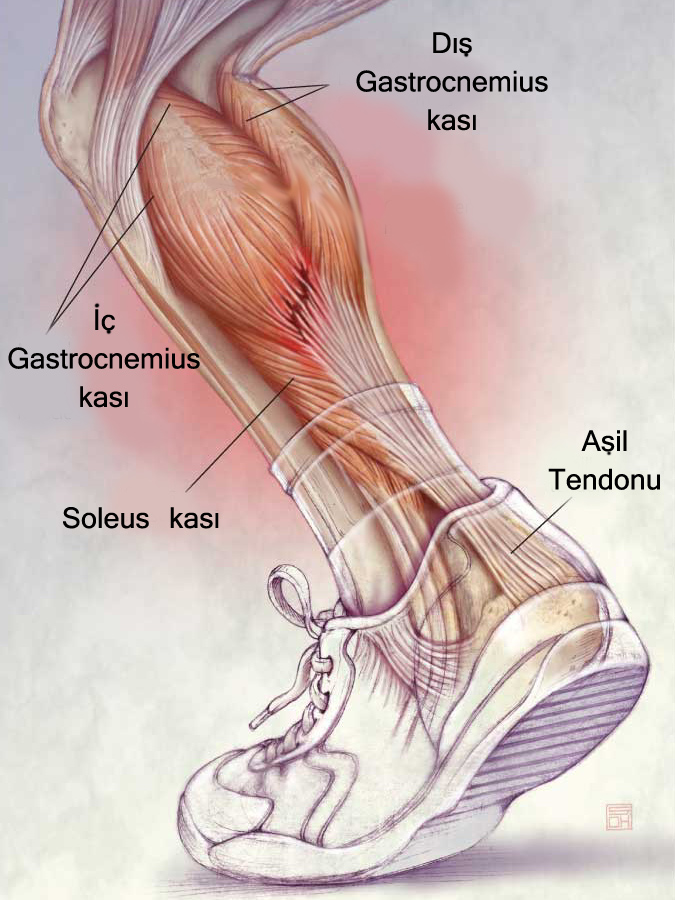
 Looking at the illustration below, you should keep in mind that: Implants are placed intramuscularly, directy inside the gastrocnemius muscle (not into the fibers converging and descending below). In other words, it should be placed intramuscularly in the area indicated by the red. Implants should remain only in the muscle stack that remains on top and should not descend into the white calcaneal tendon, that inserts onto the calcaneus (the heel bone).
Looking at the illustration below, you should keep in mind that: Implants are placed intramuscularly, directy inside the gastrocnemius muscle (not into the fibers converging and descending below). In other words, it should be placed intramuscularly in the area indicated by the red. Implants should remain only in the muscle stack that remains on top and should not descend into the white calcaneal tendon, that inserts onto the calcaneus (the heel bone).
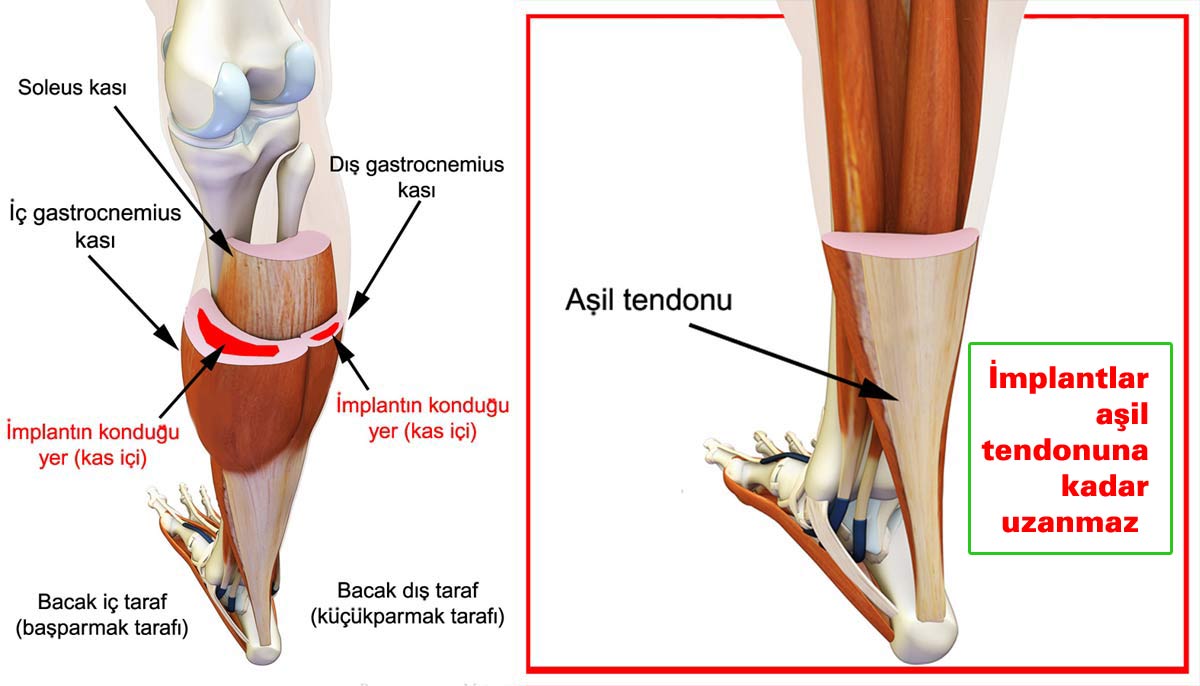
 The blue colored line marked with (1) in the image below exhibits the incision made on the posterior medial region of the knee and in majority of the cases with crooked legs, implants are placed inside the calf through this incision. The incision marked with (2), on the other hand, is made on the posterior lateral region of the knee and is only performed in patients subjected to post-polio syndrome (PPS, poliomyelitis sequelae) with very thin legs, where 2 implants will be placed on the leg at once (one on the posterior lateral region, the other on the posterior medial region of the knee).
The blue colored line marked with (1) in the image below exhibits the incision made on the posterior medial region of the knee and in majority of the cases with crooked legs, implants are placed inside the calf through this incision. The incision marked with (2), on the other hand, is made on the posterior lateral region of the knee and is only performed in patients subjected to post-polio syndrome (PPS, poliomyelitis sequelae) with very thin legs, where 2 implants will be placed on the leg at once (one on the posterior lateral region, the other on the posterior medial region of the knee).
 As is seen, implants are inserted on the posterior medial region of the knee (Figure 1) in cases of a crooked leg; there is no risk of excision of a vein or nerve with regard to that procedure as there are no nerves or veins in that area. In contrast, implants are inserted on the posterior lateral region of the knee (Figure 2) in patients subjected to post-polio syndrome; the peroneal nerve should be protected with regard to that procedure. Should the nerve is pulled to the right and left when inserting the implant, although it is protected, this may lead to a nerve damage that can last for several months.
As is seen, implants are inserted on the posterior medial region of the knee (Figure 1) in cases of a crooked leg; there is no risk of excision of a vein or nerve with regard to that procedure as there are no nerves or veins in that area. In contrast, implants are inserted on the posterior lateral region of the knee (Figure 2) in patients subjected to post-polio syndrome; the peroneal nerve should be protected with regard to that procedure. Should the nerve is pulled to the right and left when inserting the implant, although it is protected, this may lead to a nerve damage that can last for several months.
 A very important nerve is located exactly in the middle line of the posterior leg: This is the sciatic nerve. The incisions made to insert the implants should not be extended to the middle line. No incision is performed in the middle line, implant should not be inserted in here. Attention should be paid to the sciatic nerve.
A very important nerve is located exactly in the middle line of the posterior leg: This is the sciatic nerve. The incisions made to insert the implants should not be extended to the middle line. No incision is performed in the middle line, implant should not be inserted in here. Attention should be paid to the sciatic nerve.

 As is exhibited in the illustration, there are 3 main muscles in the calf area: The medial gastrocnemius muscle, the lateral gastrocnemius muscle and the Soleus muscle which is located deeper under both of them. Silicon calf implants are inserted intramuscularly into the gastrocnemius muscle. Please pay attention here. I emphasize intramuscular placement. Accordingly, the implant is inserted intramuscularly into the gastrocnemius muscle (as exhibited in the figure above); it should not descend into the white calcaneal tendon (Achilles tendon).
As is exhibited in the illustration, there are 3 main muscles in the calf area: The medial gastrocnemius muscle, the lateral gastrocnemius muscle and the Soleus muscle which is located deeper under both of them. Silicon calf implants are inserted intramuscularly into the gastrocnemius muscle. Please pay attention here. I emphasize intramuscular placement. Accordingly, the implant is inserted intramuscularly into the gastrocnemius muscle (as exhibited in the figure above); it should not descend into the white calcaneal tendon (Achilles tendon).
![]() If you cannot view the video below, click here to watch it on YouTube.
If you cannot view the video below, click here to watch it on YouTube.
 In cases of a crooked legs: In these cases, it will usually be sufficient to insert a single implant intramuscularly into the medial gastrocnemius muscle (one into each leg, a total of 2 implants). These implants are placed posterior to the knee through the place marked with (1) in the image above.
In cases of a crooked legs: In these cases, it will usually be sufficient to insert a single implant intramuscularly into the medial gastrocnemius muscle (one into each leg, a total of 2 implants). These implants are placed posterior to the knee through the place marked with (1) in the image above.
 In case of patients subjected to poliomyelitis sequelae: In case the patient is subjected to poliomyelitis sequelae and if one leg is too thin compared to the other; it may be necessary to insert two implants, one each into medial and lateral gastrocnemius muscle (I don't mean it's compulsory; sometimes a single implant for a paralyzed leg would be sufficient). Implants for the medial gastrocnemius muscle should be inserted through the point marked with (1) whereas implants for the lateral gastrocnemius muscle should be inserted through the point marked with (2). As mentioned above, the peroneal nerve should be protected while inserting the implants into the lateral gastrocnemius muscle. Should the nerve is pulled to the right and left when inserting the implant, although it is protected, this may lead to a nerve damage that can last for several months. By the way, please do not forget that these patients are subjected to prior polio; that is, the nerves that we need to protect may not actually work and the patient may be dragging his foot. Nevertheless, it is necessary to protect these nerves in order not to completely lose the Gait Ability.
In case of patients subjected to poliomyelitis sequelae: In case the patient is subjected to poliomyelitis sequelae and if one leg is too thin compared to the other; it may be necessary to insert two implants, one each into medial and lateral gastrocnemius muscle (I don't mean it's compulsory; sometimes a single implant for a paralyzed leg would be sufficient). Implants for the medial gastrocnemius muscle should be inserted through the point marked with (1) whereas implants for the lateral gastrocnemius muscle should be inserted through the point marked with (2). As mentioned above, the peroneal nerve should be protected while inserting the implants into the lateral gastrocnemius muscle. Should the nerve is pulled to the right and left when inserting the implant, although it is protected, this may lead to a nerve damage that can last for several months. By the way, please do not forget that these patients are subjected to prior polio; that is, the nerves that we need to protect may not actually work and the patient may be dragging his foot. Nevertheless, it is necessary to protect these nerves in order not to completely lose the Gait Ability.
 In these patients, one leg is usually thinner than the other and the leg that is thin usually needs to be equalized to the other.
In these patients, one leg is usually thinner than the other and the leg that is thin usually needs to be equalized to the other.


![]() WHY DO THE SURGICAL SCARS BEHIND THE KNEE TEND TO REMAIN DARK IN COLOR; WHAT SHOULD WE DO TO PREVENT THIS?
WHY DO THE SURGICAL SCARS BEHIND THE KNEE TEND TO REMAIN DARK IN COLOR; WHAT SHOULD WE DO TO PREVENT THIS?
![]() Classic plastic surgery books say that: "Considering the operations performed posterior to the knee, the surgical scars tend to remain in darker color compared to the surrounding area due to the pigmentation characteristics of the skin in this area. That is why it is recommended to apply a skin bleaching cream before surgery." I think this information is completely wrong. In accordance with my experience, I can say that the underlying reason for the dark colored scars in this area is the subcutaneous blood during and after the surgical procedure. For sure, the subcutaneous spread of blood is a characteristic of the skin layer covering this area, but what causes the scars to remain dark is not a problem with regard to the healing of the skin. It also has nothing to do with pigmentation, that’s why bleaching creams would be useless. The slightest bleeding that occurs following an incision on the skin, immediately spreads subcutaneously. The iron element available in the hemoglobin, which is the molecule that transports the oxygen in the blood, settles with the subcutaneous tissue. Iron gives the skin its dark color. If the scars associated with the sutures remain wide and dark in color, it is because of the iron that settles in the subcutaneous tissue.
Classic plastic surgery books say that: "Considering the operations performed posterior to the knee, the surgical scars tend to remain in darker color compared to the surrounding area due to the pigmentation characteristics of the skin in this area. That is why it is recommended to apply a skin bleaching cream before surgery." I think this information is completely wrong. In accordance with my experience, I can say that the underlying reason for the dark colored scars in this area is the subcutaneous blood during and after the surgical procedure. For sure, the subcutaneous spread of blood is a characteristic of the skin layer covering this area, but what causes the scars to remain dark is not a problem with regard to the healing of the skin. It also has nothing to do with pigmentation, that’s why bleaching creams would be useless. The slightest bleeding that occurs following an incision on the skin, immediately spreads subcutaneously. The iron element available in the hemoglobin, which is the molecule that transports the oxygen in the blood, settles with the subcutaneous tissue. Iron gives the skin its dark color. If the scars associated with the sutures remain wide and dark in color, it is because of the iron that settles in the subcutaneous tissue.
![]() A patient who had bleeding at the incision site during surgery and therefore had dark scars associated with the sutures. These dark scars associated with the sutures of this patient were removed and the incision site was re-sutured.Thus, the surgical scars were corrected..
A patient who had bleeding at the incision site during surgery and therefore had dark scars associated with the sutures. These dark scars associated with the sutures of this patient were removed and the incision site was re-sutured.Thus, the surgical scars were corrected..
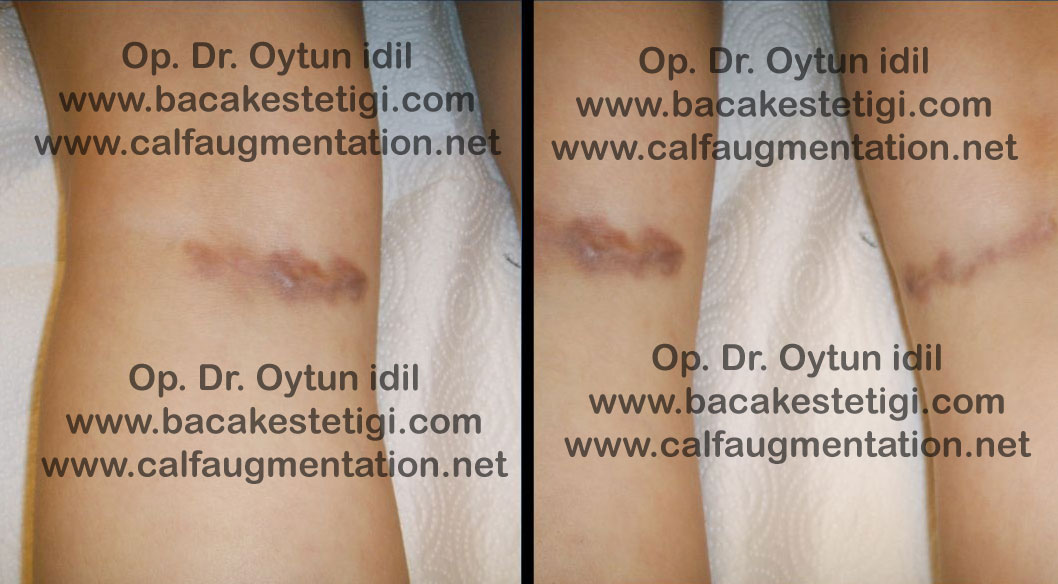
![]() What should we do to prevent this?
What should we do to prevent this?
![]() The reason underlying the dark color of the scars posterior to the knee is the iron element available in the blood that spreads in the subcutaneous tissues; therefore it will be necessary to prevent bleeding when making an incision in this area. There should be no bleeding at all. For this reason, we first inject an adrenaline-containing analgesic into this area and wait for about 10 minutes. During this period, the drug takes effect and the capillaries in the area contract and close. There is no bleeding associated with the incision. However, in case there are still thin veins that bleed, we cauterize them with a tool that we call as cautery. To achieve the most aesthetic and hardly visible surgical scar as possible with regard to the operations performed posterior to the knee, we try to avoid any bleeding when making an incision.
The reason underlying the dark color of the scars posterior to the knee is the iron element available in the blood that spreads in the subcutaneous tissues; therefore it will be necessary to prevent bleeding when making an incision in this area. There should be no bleeding at all. For this reason, we first inject an adrenaline-containing analgesic into this area and wait for about 10 minutes. During this period, the drug takes effect and the capillaries in the area contract and close. There is no bleeding associated with the incision. However, in case there are still thin veins that bleed, we cauterize them with a tool that we call as cautery. To achieve the most aesthetic and hardly visible surgical scar as possible with regard to the operations performed posterior to the knee, we try to avoid any bleeding when making an incision.
![]() A patient whose bleeding is prevented at the incision site during surgery. Accordingly, if bleeding is prevented at the incision site, the scars remain rather invisible.
A patient whose bleeding is prevented at the incision site during surgery. Accordingly, if bleeding is prevented at the incision site, the scars remain rather invisible.
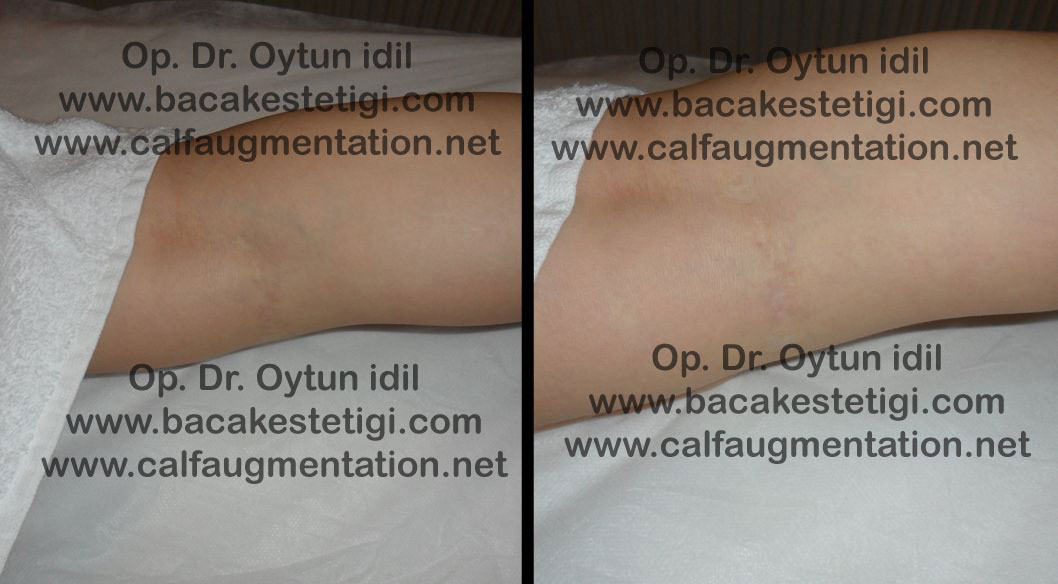
![]() The information provided in the books is incorrect. The dark color of the surgical suture scars has nothing to do with pigmentation. That’s why bleaching creams would be useless. In case bleeding is prevented at the incision site, the scars remain rather invisible.
The information provided in the books is incorrect. The dark color of the surgical suture scars has nothing to do with pigmentation. That’s why bleaching creams would be useless. In case bleeding is prevented at the incision site, the scars remain rather invisible.
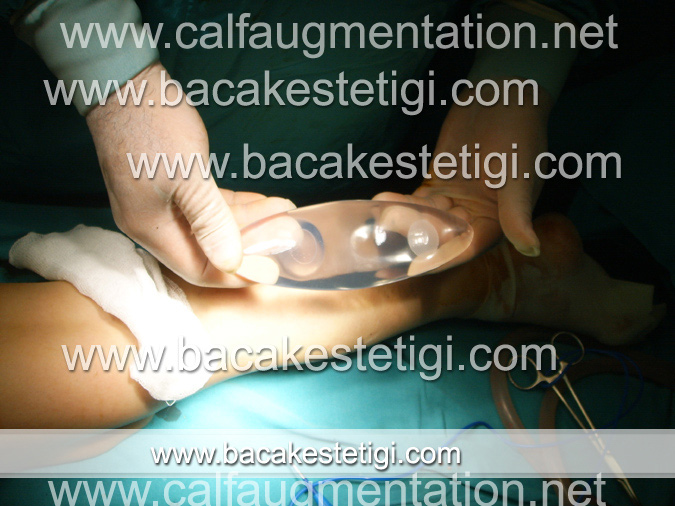
 In cases of prior poliomyelitis, it is difficult to make both legs exactly equal. In these cases, our main goal is not to exactly equalize the diameter of both legs. The main purpose is to minimize the visual asymmetry to the extent possible so that it does not attract attention. The surgeon should not promise the patient to exactly equalize the thickness of the legs. The post-operative first few days after the implant is placed in the calf would be a little painful. The reason is that the implant causes intramuscular contraction, because the membrane surrounding the muscle is not flexible. The inflexible membrane surrounding the muscle expands over time and allows the implant to augment the calf. The leg results with a plumper look within post-operative 3-6 months. The fascia of the muscle expands over time and allows the implant to augment the calf. That is, when you insert a calf implant aimed at correcting the asymmetric image between both legs of the patients with prior poliomyelitis, you will not get the desired result immediately after surgery. It is necessary to wait for a few months to allow the implant augment the leg a little more. I recommend these patients: "Measure the calf circumference with a tape measure at the place where the leg is the thickest. Make a note of this somewhere. Re-measure the same area at the end of post-operative 3-6 months. You will notice that the leg becomes gradually thicker over the months". Due to these dynamic developments, it will be difficult to exactly equalize the thickness of the legs even after 6 months after surgery. In cases of prior poliomyelitis, our main goal is not to exactly equalize the diameter of both legs. The main purpose is to minimize the visual asymmetry to the extent possible so that it does not attract attention.
In cases of prior poliomyelitis, it is difficult to make both legs exactly equal. In these cases, our main goal is not to exactly equalize the diameter of both legs. The main purpose is to minimize the visual asymmetry to the extent possible so that it does not attract attention. The surgeon should not promise the patient to exactly equalize the thickness of the legs. The post-operative first few days after the implant is placed in the calf would be a little painful. The reason is that the implant causes intramuscular contraction, because the membrane surrounding the muscle is not flexible. The inflexible membrane surrounding the muscle expands over time and allows the implant to augment the calf. The leg results with a plumper look within post-operative 3-6 months. The fascia of the muscle expands over time and allows the implant to augment the calf. That is, when you insert a calf implant aimed at correcting the asymmetric image between both legs of the patients with prior poliomyelitis, you will not get the desired result immediately after surgery. It is necessary to wait for a few months to allow the implant augment the leg a little more. I recommend these patients: "Measure the calf circumference with a tape measure at the place where the leg is the thickest. Make a note of this somewhere. Re-measure the same area at the end of post-operative 3-6 months. You will notice that the leg becomes gradually thicker over the months". Due to these dynamic developments, it will be difficult to exactly equalize the thickness of the legs even after 6 months after surgery. In cases of prior poliomyelitis, our main goal is not to exactly equalize the diameter of both legs. The main purpose is to minimize the visual asymmetry to the extent possible so that it does not attract attention.

 Underneath the fascia (underneath the muscular membrane sub-muscularly): With this option, the implant is actually outside the muscle; it is underneath the muscular membrane. This is one of the 2 areas in which implants are classically placed in surgery. With this method, the implant is inserted in between the muscle and the muscle membrane without the need to create a lodge between the muscle fibers. There are a few disadvantages about placing the implants under the fascia. Firstly, you cannot guarantee displacement/relocation when the implant is placed sub-muscularly; in case of sub-muscular placement, you cannot expect a matrushka doll effect as with intramuscular placement; the implant may shift, it can be displaced. As there is only a membrane between the incision line on the skin and the implant, the implant may exert pressure to this line. In addition, although very rare, the implant may become visible from outside months or years after surgery. Over the years, the muscular membrane may expand/get loose and the edges of the implant may become noticeable (skeletonize). Although there is no such risk with intramuscular placement, a little risk may be concerned with implants placed under the muscular membrane. Although it is a simpler procedure to place the implant in this area, I personally would not recommend it as there is a high risk of experiencing complications.
Underneath the fascia (underneath the muscular membrane sub-muscularly): With this option, the implant is actually outside the muscle; it is underneath the muscular membrane. This is one of the 2 areas in which implants are classically placed in surgery. With this method, the implant is inserted in between the muscle and the muscle membrane without the need to create a lodge between the muscle fibers. There are a few disadvantages about placing the implants under the fascia. Firstly, you cannot guarantee displacement/relocation when the implant is placed sub-muscularly; in case of sub-muscular placement, you cannot expect a matrushka doll effect as with intramuscular placement; the implant may shift, it can be displaced. As there is only a membrane between the incision line on the skin and the implant, the implant may exert pressure to this line. In addition, although very rare, the implant may become visible from outside months or years after surgery. Over the years, the muscular membrane may expand/get loose and the edges of the implant may become noticeable (skeletonize). Although there is no such risk with intramuscular placement, a little risk may be concerned with implants placed under the muscular membrane. Although it is a simpler procedure to place the implant in this area, I personally would not recommend it as there is a high risk of experiencing complications.
 When the patient, with the photos below, contacted me the image was the same as on the left. Another surgeon had performed a leg restoration surgery using a calf implant for this patient. The implants were placed sub-fascially during the operation. As is seen through the photos, the implant is noticeable from outside; there is only muscular fascia (membrane), subcutaneous adipose tissue and skin surrounding the implant. However, in case the implant were placed intramuscularly, it would not be noticeable from outside. We performed a revision surgery for the patient where we removed the implant placed under the fascia and replaced it intramuscularly. The photo on the right represents the patient's image following the revision surgery. The probability of noticing an intramuscularly placed implant from outside is now zero.
When the patient, with the photos below, contacted me the image was the same as on the left. Another surgeon had performed a leg restoration surgery using a calf implant for this patient. The implants were placed sub-fascially during the operation. As is seen through the photos, the implant is noticeable from outside; there is only muscular fascia (membrane), subcutaneous adipose tissue and skin surrounding the implant. However, in case the implant were placed intramuscularly, it would not be noticeable from outside. We performed a revision surgery for the patient where we removed the implant placed under the fascia and replaced it intramuscularly. The photo on the right represents the patient's image following the revision surgery. The probability of noticing an intramuscularly placed implant from outside is now zero.

 Intramuscular placement (into the gastrocnemius muscle): Intramuscularly inserted implants certainly do not cause problems (if the appropriate implants are selected for the patient). Intramuscular placement causes a situation exactly similar to the matryoshka dolls of Russians. An intramuscularly inserted implant, although it is smaller but exactly with the shape of the muscle, will allow the muscle to augment in the most natural way possible. As the implants are inserted exactly into the middle of the muscle with this technique, not only the result will be natural but also the implants will not move to the right and left. See the photo of matrushka doll below; can inner matrushka doll move? There is no way for the inner matryoshka doll to move anywhere while she is inside. Throughout this surgery, the muscle fibers are dissected and an appropriate lodge is created to place the implant. There is no bleeding as muscular fibers are not snipped, but are dissected.
Intramuscular placement (into the gastrocnemius muscle): Intramuscularly inserted implants certainly do not cause problems (if the appropriate implants are selected for the patient). Intramuscular placement causes a situation exactly similar to the matryoshka dolls of Russians. An intramuscularly inserted implant, although it is smaller but exactly with the shape of the muscle, will allow the muscle to augment in the most natural way possible. As the implants are inserted exactly into the middle of the muscle with this technique, not only the result will be natural but also the implants will not move to the right and left. See the photo of matrushka doll below; can inner matrushka doll move? There is no way for the inner matryoshka doll to move anywhere while she is inside. Throughout this surgery, the muscle fibers are dissected and an appropriate lodge is created to place the implant. There is no bleeding as muscular fibers are not snipped, but are dissected.
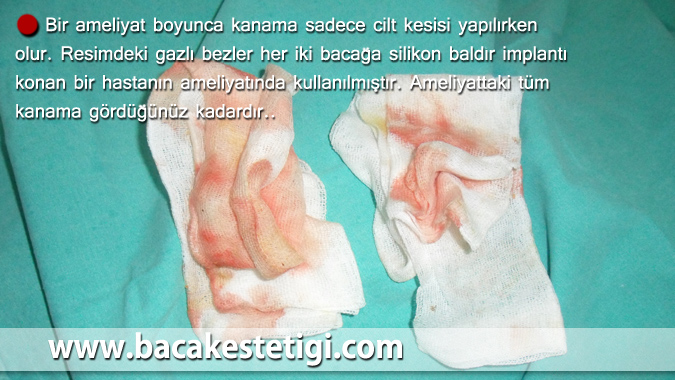
 The implant remains completely inside the muscle, when it is placed intramuscularly. Intramuscularly inserted implants is exactly similar to the matryoshka dolls of Russians. Matrushka dolls of Russians are also nested. The biggest baby hides one size smaller and it hides one size smaller etc. Intramuscularly inserted calf implants are similar to these matryoshka dolls. Accordingly; inserting calf implants intramuscularly, using an (idil dissector), is a surprisingly simple and bloodless procedure. The main advantage of inserting the implant intramuscularly is that it is not possible for the implant to move or exert pressure on the sutures. Intramuscularly inserted implants certainly do not cause problems (if the appropriate implants are selected concerning the height and leg length of the patient) and do not go out of incision line. Fibers dissected when inserting the implant intramuscularly are necessarily sutured, hence the place where the implant is inserted is closed. Intramuscular placement provides the most natural result possible.
The implant remains completely inside the muscle, when it is placed intramuscularly. Intramuscularly inserted implants is exactly similar to the matryoshka dolls of Russians. Matrushka dolls of Russians are also nested. The biggest baby hides one size smaller and it hides one size smaller etc. Intramuscularly inserted calf implants are similar to these matryoshka dolls. Accordingly; inserting calf implants intramuscularly, using an (idil dissector), is a surprisingly simple and bloodless procedure. The main advantage of inserting the implant intramuscularly is that it is not possible for the implant to move or exert pressure on the sutures. Intramuscularly inserted implants certainly do not cause problems (if the appropriate implants are selected concerning the height and leg length of the patient) and do not go out of incision line. Fibers dissected when inserting the implant intramuscularly are necessarily sutured, hence the place where the implant is inserted is closed. Intramuscular placement provides the most natural result possible.
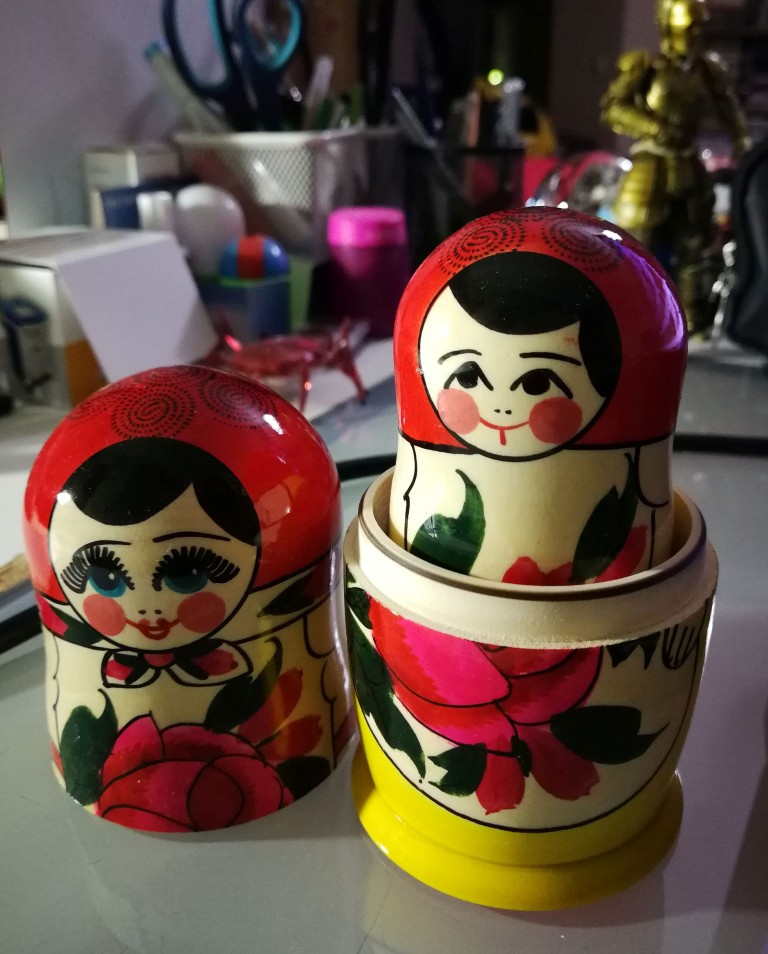


![]() FINE TIP SCISSORS ARE NOT USED FOR EXCISION! ON THE CONTRARY, THEY ARE USED FOR NOT SNIPPING THE TISSUES, BUT TO DISSECT THEM!
FINE TIP SCISSORS ARE NOT USED FOR EXCISION! ON THE CONTRARY, THEY ARE USED FOR NOT SNIPPING THE TISSUES, BUT TO DISSECT THEM!
![]() We use extra fine-tipped scissors when intramuscularly inserting implants such as these; but we don't use scissors for snipping! When closing both ends of the scissors, we normally excise something. In these surgeries, we do the opposite. We place the scissors between the muscular fibers while the tip is closed and we open the tip of the scissors while the scissors is between the muscular fibers (that’s why we use fine tipped surgical scissors in this surgery; the tip of the scissors should be moved forward into the muscle fibers). That is; we use it not to excise the tissues, but on the contrary, to dissect the muscular fibers without giving any damage. In this way, the muscular fibers are neither damaged nor there is any bleeding. For this reason, there is no damage to the tissues; it is an operation in which no other incision is required except the incision made on the skin.
We use extra fine-tipped scissors when intramuscularly inserting implants such as these; but we don't use scissors for snipping! When closing both ends of the scissors, we normally excise something. In these surgeries, we do the opposite. We place the scissors between the muscular fibers while the tip is closed and we open the tip of the scissors while the scissors is between the muscular fibers (that’s why we use fine tipped surgical scissors in this surgery; the tip of the scissors should be moved forward into the muscle fibers). That is; we use it not to excise the tissues, but on the contrary, to dissect the muscular fibers without giving any damage. In this way, the muscular fibers are neither damaged nor there is any bleeding. For this reason, there is no damage to the tissues; it is an operation in which no other incision is required except the incision made on the skin.
 Veins: The lower limb consists of two main types of veins; superficial veins and deep veins. There are deep veins which accompany the major arteries. As no further incision is required when inserting a silicone implant into the calf and as the implant is inserted by dissecting the muscle fibers, the veins are not damaged. However for some time after silicone implant surgery, patient may suffer swelling in the feet when standing for a long time. This is due to the fact that silicone implants exert pressure on the veins of the legs. Such complaints gradually disappear, usually in the post-operative first 2-3 months, upon the loosening of the muscular membrane and the relief of the veins. Some surgeons advise their patients to wear varicose stockings for a long time after surgery. Personally, I don't think that it is compulsory. Temporary swellings in the post-operative first 2-3 months gradually disappear, do not become permanent. Throughout the post-operative first months, I receive such complaints particularly from our patients who have to work standing up (for example teachers, doctors, tourist guides, hostess); but I tell them that this is temporary. This condition usually improves by the end of the post-operative first months.
Veins: The lower limb consists of two main types of veins; superficial veins and deep veins. There are deep veins which accompany the major arteries. As no further incision is required when inserting a silicone implant into the calf and as the implant is inserted by dissecting the muscle fibers, the veins are not damaged. However for some time after silicone implant surgery, patient may suffer swelling in the feet when standing for a long time. This is due to the fact that silicone implants exert pressure on the veins of the legs. Such complaints gradually disappear, usually in the post-operative first 2-3 months, upon the loosening of the muscular membrane and the relief of the veins. Some surgeons advise their patients to wear varicose stockings for a long time after surgery. Personally, I don't think that it is compulsory. Temporary swellings in the post-operative first 2-3 months gradually disappear, do not become permanent. Throughout the post-operative first months, I receive such complaints particularly from our patients who have to work standing up (for example teachers, doctors, tourist guides, hostess); but I tell them that this is temporary. This condition usually improves by the end of the post-operative first months.
 By the way this surgery may concretize the varicose veins of patients who have previously had this problems, as it will compress the veins in the leg. It is not surprising for patients with prior varicose veins to suffer apparent varicose veins.
By the way this surgery may concretize the varicose veins of patients who have previously had this problems, as it will compress the veins in the leg. It is not surprising for patients with prior varicose veins to suffer apparent varicose veins.
![]() Subcutaneous placement: Absolutely no implants should be placed subcutaneously. In case of subcutaneous placement, all the edges of the implant will be visible from outside and the appearance will not be natural at all. Subcutaneous placement is often a mistake that surgeons who do not have enough experience in this surgery fall into.
Subcutaneous placement: Absolutely no implants should be placed subcutaneously. In case of subcutaneous placement, all the edges of the implant will be visible from outside and the appearance will not be natural at all. Subcutaneous placement is often a mistake that surgeons who do not have enough experience in this surgery fall into.
![]() Placement under the superficial fascia of the leg: This is often a mistake that surgeons who do not have enough experience in this surgery fall into. The implant placed underneath the superficial fascia, assuming that it is deep, results as if it were placed subcutaneously. All the edges of the implant will be visible from outside.
Placement under the superficial fascia of the leg: This is often a mistake that surgeons who do not have enough experience in this surgery fall into. The implant placed underneath the superficial fascia, assuming that it is deep, results as if it were placed subcutaneously. All the edges of the implant will be visible from outside.
![]() Placement in the soleus muscle: The soleus muscle, functionally, contributes to the activity of walking and running; it is mainly known as the walking and running muscle. That is why implants inserted intramuscularly into the soleus muscle may affect gait. Furthermore as the soleus muscle is located posterior to the lower leg and the medial border, the implant inserted into this muscle shall not correct the appearance of a crooked leg. Implants aiming to correct the appearance of crooked legs should be placed inside the gastrocnemius muscle, which is located on the posterior medial region of the leg.Soleus muscle is located on the medial border. That is why the placement of implants in the soleus muscle is not recommended.
Placement in the soleus muscle: The soleus muscle, functionally, contributes to the activity of walking and running; it is mainly known as the walking and running muscle. That is why implants inserted intramuscularly into the soleus muscle may affect gait. Furthermore as the soleus muscle is located posterior to the lower leg and the medial border, the implant inserted into this muscle shall not correct the appearance of a crooked leg. Implants aiming to correct the appearance of crooked legs should be placed inside the gastrocnemius muscle, which is located on the posterior medial region of the leg.Soleus muscle is located on the medial border. That is why the placement of implants in the soleus muscle is not recommended.
![]() Placement near the bone (under the soleus muscle just above the bone..): In case calf implants are inserted below the calf muscles (gastrocnemius and the soleus muscles), right above the bones of the leg (very deep), the appearance from outside is not badly affected (the prosthesis is not obvious from outside, but the result will not be satisfactory) however the patient will suffer long-lasting, sometimes permanent, whining. As the implants come into contact with the bone, they will cause pain. As they are placed too deep, it is also difficult to remove such implants. I have had one or two such cases. Patients who had undergone implant surgery in another clinic however were not satisfied with the outcome contacted me; we scheduled the replacement and relocation of implants. It was extremely difficult to remove the implants. It was extremely difficult to remove the implants as they were placed even under the soleus muscle and right above the bone. That is why I require the patients who apply for the replacement of their implants to submit a computed tomography (CT) of the calf area. CT allows us to see clearly where the implants are placed. Thus, I am no longer surprised about implants placed too deeply. In case CT exhibits that the implants are placed close to the bone (too deep), I begin the surgery prepared accordingly.
Placement near the bone (under the soleus muscle just above the bone..): In case calf implants are inserted below the calf muscles (gastrocnemius and the soleus muscles), right above the bones of the leg (very deep), the appearance from outside is not badly affected (the prosthesis is not obvious from outside, but the result will not be satisfactory) however the patient will suffer long-lasting, sometimes permanent, whining. As the implants come into contact with the bone, they will cause pain. As they are placed too deep, it is also difficult to remove such implants. I have had one or two such cases. Patients who had undergone implant surgery in another clinic however were not satisfied with the outcome contacted me; we scheduled the replacement and relocation of implants. It was extremely difficult to remove the implants. It was extremely difficult to remove the implants as they were placed even under the soleus muscle and right above the bone. That is why I require the patients who apply for the replacement of their implants to submit a computed tomography (CT) of the calf area. CT allows us to see clearly where the implants are placed. Thus, I am no longer surprised about implants placed too deeply. In case CT exhibits that the implants are placed close to the bone (too deep), I begin the surgery prepared accordingly.

 Based on my experience, I can say that the most favorable placement for the calf implant is intramuscularly into the gastrocnemius muscle. When implants are placed intramuscularly, they will not move, they will not come out by forcing the incision line; the appearance will be in the most natural way possible and the implants will not be noticeable from outside. The most accurate and reasonable placement for the implants should be intramuscular: The best procedure shall be to insert an implant right into (in the middle of) the muscle that we aim to augment.
Based on my experience, I can say that the most favorable placement for the calf implant is intramuscularly into the gastrocnemius muscle. When implants are placed intramuscularly, they will not move, they will not come out by forcing the incision line; the appearance will be in the most natural way possible and the implants will not be noticeable from outside. The most accurate and reasonable placement for the implants should be intramuscular: The best procedure shall be to insert an implant right into (in the middle of) the muscle that we aim to augment.
 The question that my patients most frequently ask me is whether there is a risk for the implants to move or relocate. The right place to insert these implants should be inside the gastrocnemius muscle (intramuscular placement). We place a smaller model of the muscle, similar to the shape of the muscle, in order to allow the muscle in the most natural way. We may associate this situation to the traditional matryoshka dolls of Russians. The biggest Matryoshka dolls encloses a smaller one inside, this small one encloses the smaller etc. Intramuscularly inserted implants is exactly similar to the matryoshka dolls of Russians; there is no way for the inner matryoshka doll to move anywhere while she is inside. The smallest of the matryoshka doll cannot move anywhere anyway, because it is already inside a bigger one and has no place to move.
The question that my patients most frequently ask me is whether there is a risk for the implants to move or relocate. The right place to insert these implants should be inside the gastrocnemius muscle (intramuscular placement). We place a smaller model of the muscle, similar to the shape of the muscle, in order to allow the muscle in the most natural way. We may associate this situation to the traditional matryoshka dolls of Russians. The biggest Matryoshka dolls encloses a smaller one inside, this small one encloses the smaller etc. Intramuscularly inserted implants is exactly similar to the matryoshka dolls of Russians; there is no way for the inner matryoshka doll to move anywhere while she is inside. The smallest of the matryoshka doll cannot move anywhere anyway, because it is already inside a bigger one and has no place to move.
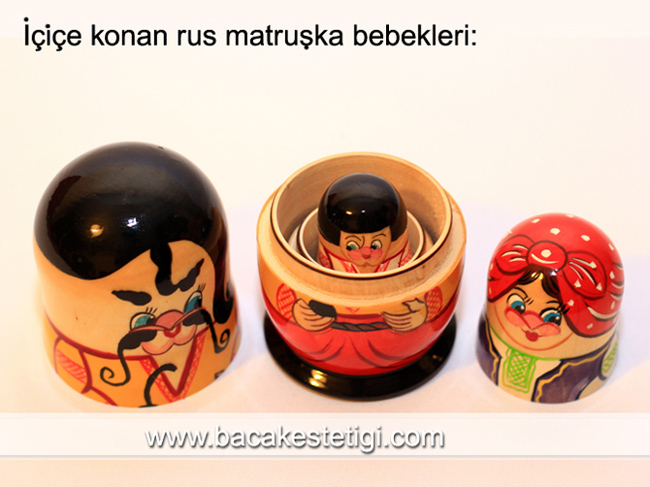
 This surgery was first performed in 1975 in the USA and calf implants began to be mass-produced as of 1979. Until today, the surgical techniques have been well improved, the risks associated with this procedure have been minimized and results of the surgery have been recurrently confirmed.
This surgery was first performed in 1975 in the USA and calf implants began to be mass-produced as of 1979. Until today, the surgical techniques have been well improved, the risks associated with this procedure have been minimized and results of the surgery have been recurrently confirmed.
 The operation is performed with the patient under general anesthesia. As the patient will be lying in prone position during the surgery, he/she is anesthetized while on a stretcher and then transferred to the operating table after he/she is put to sleep.
The operation is performed with the patient under general anesthesia. As the patient will be lying in prone position during the surgery, he/she is anesthetized while on a stretcher and then transferred to the operating table after he/she is put to sleep.
 Both legs are sterilized all around by wiping with disinfectant up to the knee and covered with sterile covers. Even if the patient will be operated on one leg (for example due to polio sequelae), both legs are disinfected and prepared for the operation; it is important to see the two legs collateral during the surgery to ensure symmetry. For example, the patient illustrated in the photograph below is suffering from developmental retardation in his left leg due to polio sequelae. The implant will be placed only in the left leg, however both legs are prepared for the operation in order to observe the symmetry. Thus, the symmetry between the two legs will be evaluated following the surgical procedure where the implant is placed in the left leg.
Both legs are sterilized all around by wiping with disinfectant up to the knee and covered with sterile covers. Even if the patient will be operated on one leg (for example due to polio sequelae), both legs are disinfected and prepared for the operation; it is important to see the two legs collateral during the surgery to ensure symmetry. For example, the patient illustrated in the photograph below is suffering from developmental retardation in his left leg due to polio sequelae. The implant will be placed only in the left leg, however both legs are prepared for the operation in order to observe the symmetry. Thus, the symmetry between the two legs will be evaluated following the surgical procedure where the implant is placed in the left leg.
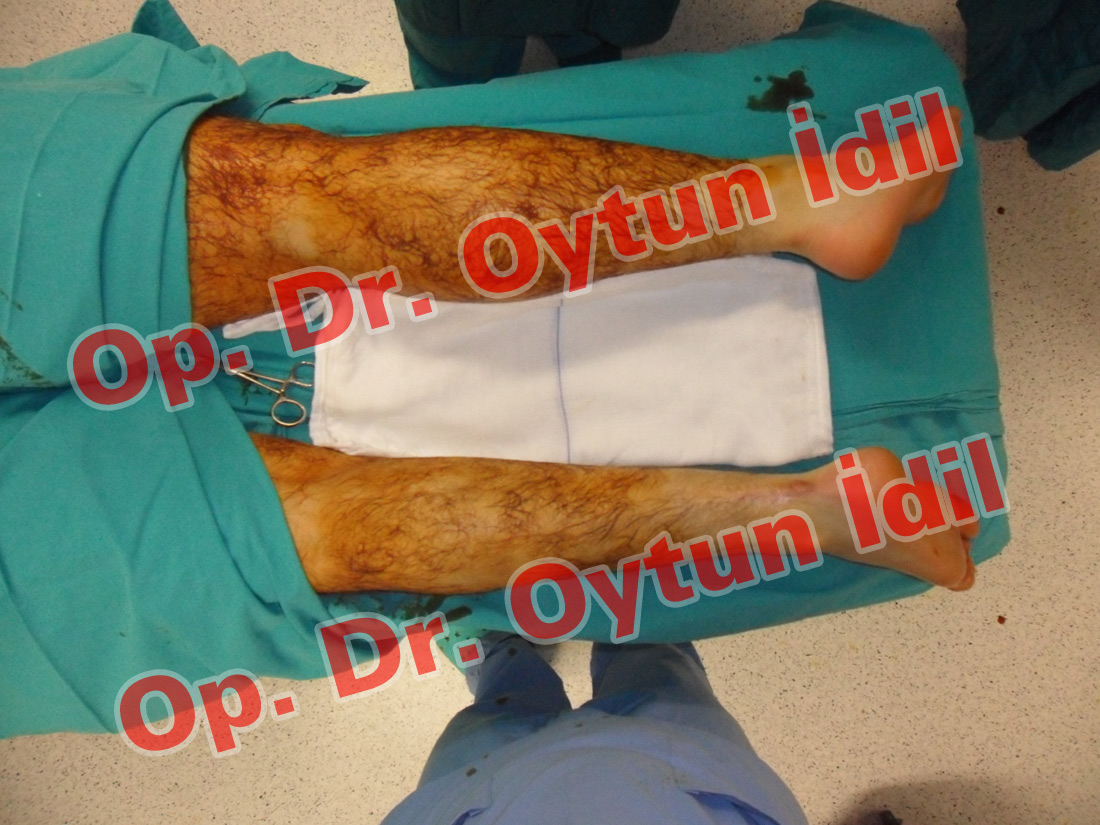
 The incision site posterior to the knee will be marked.
The incision site posterior to the knee will be marked.
 An injection is administered to reduce the bleeding on this line and we wait for 10-15 minutes for it to take effect.
An injection is administered to reduce the bleeding on this line and we wait for 10-15 minutes for it to take effect.
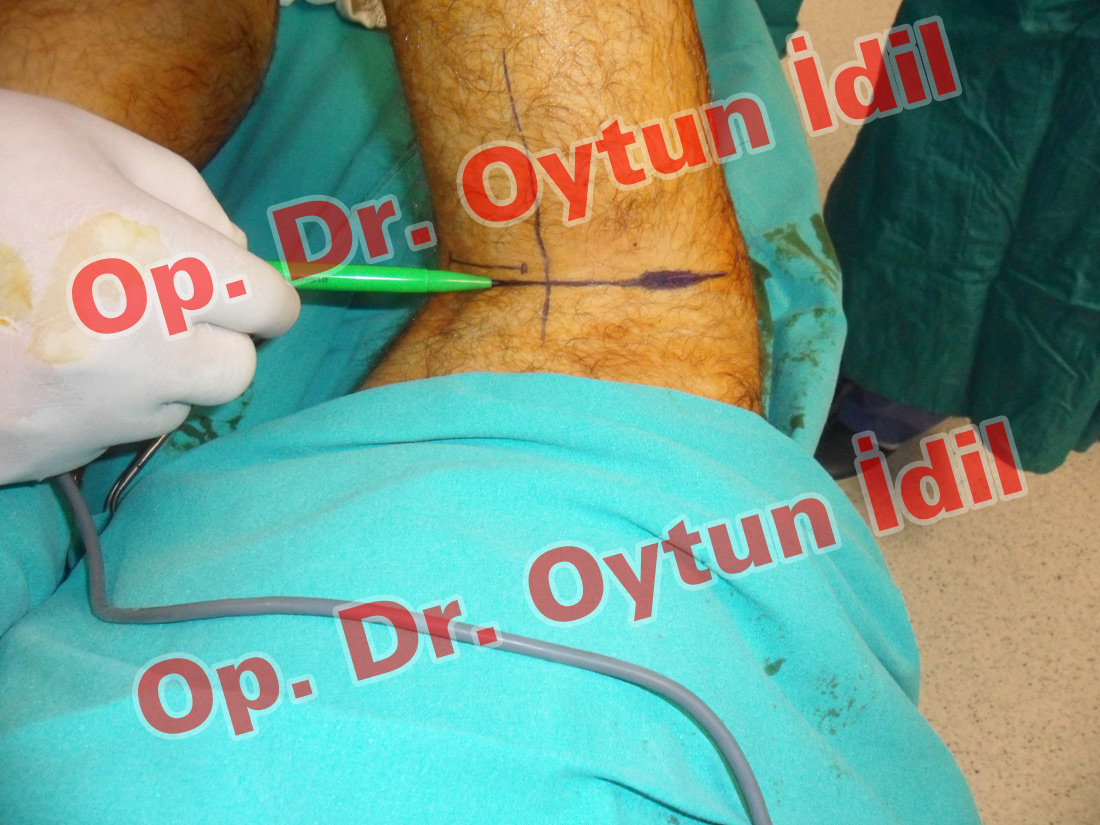
 The planned incision is made posterior to the knee and the membrane surrounding the gastrocnemius muscle (calf muscle) is immediately visible. Technically, the implant may be placed underneath this muscle membrane; but in my opinion, placing the implant directly intramuscularly instead of placing it underneath this muscle membrane gives a more natural result. This surgery is completed almost without any bleeding and no tissue is excised except the skin.
The planned incision is made posterior to the knee and the membrane surrounding the gastrocnemius muscle (calf muscle) is immediately visible. Technically, the implant may be placed underneath this muscle membrane; but in my opinion, placing the implant directly intramuscularly instead of placing it underneath this muscle membrane gives a more natural result. This surgery is completed almost without any bleeding and no tissue is excised except the skin.
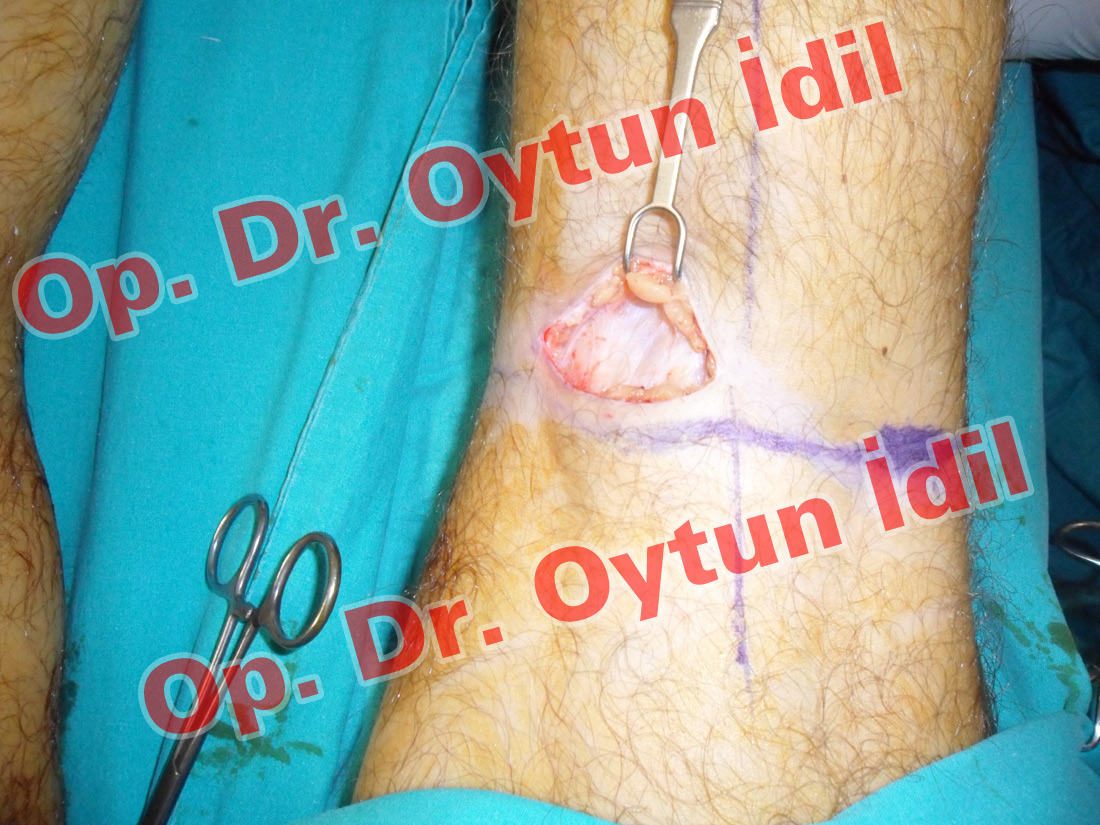
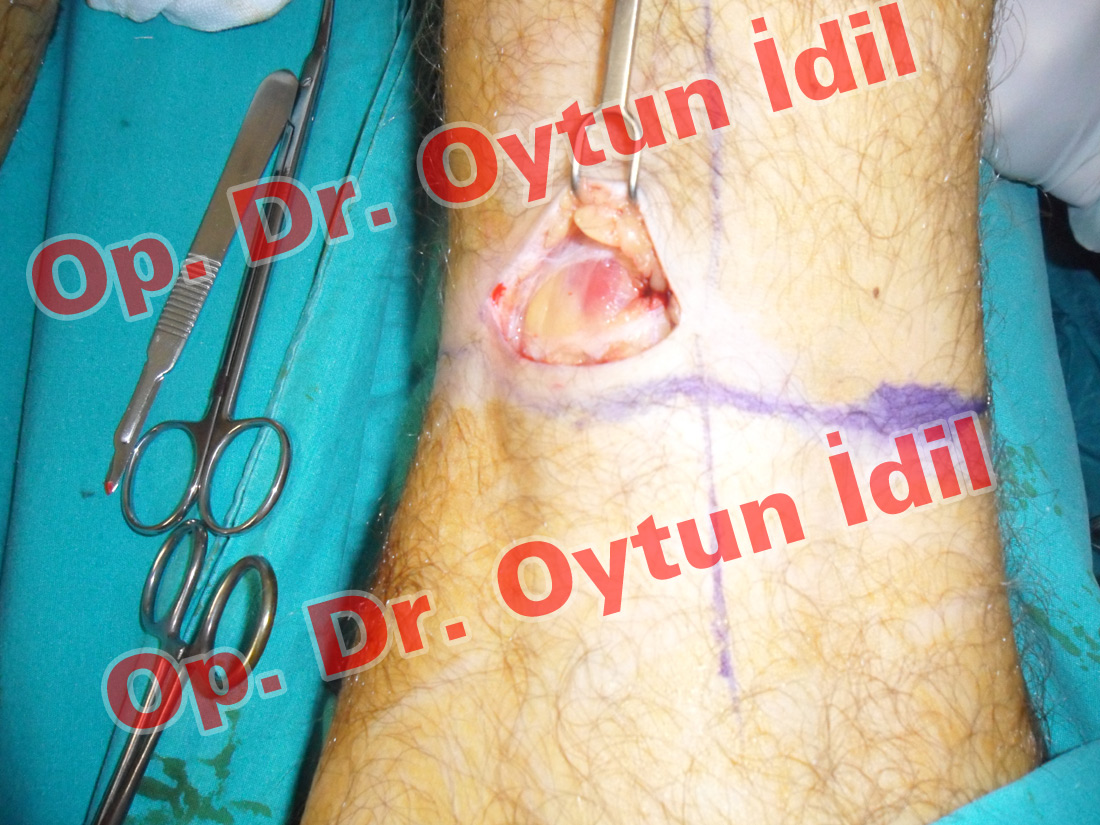
 A short incision is made on the membrane of this muscle. We directly come up with the gastrocnemius muscle when the membrane is dissected.
A short incision is made on the membrane of this muscle. We directly come up with the gastrocnemius muscle when the membrane is dissected.
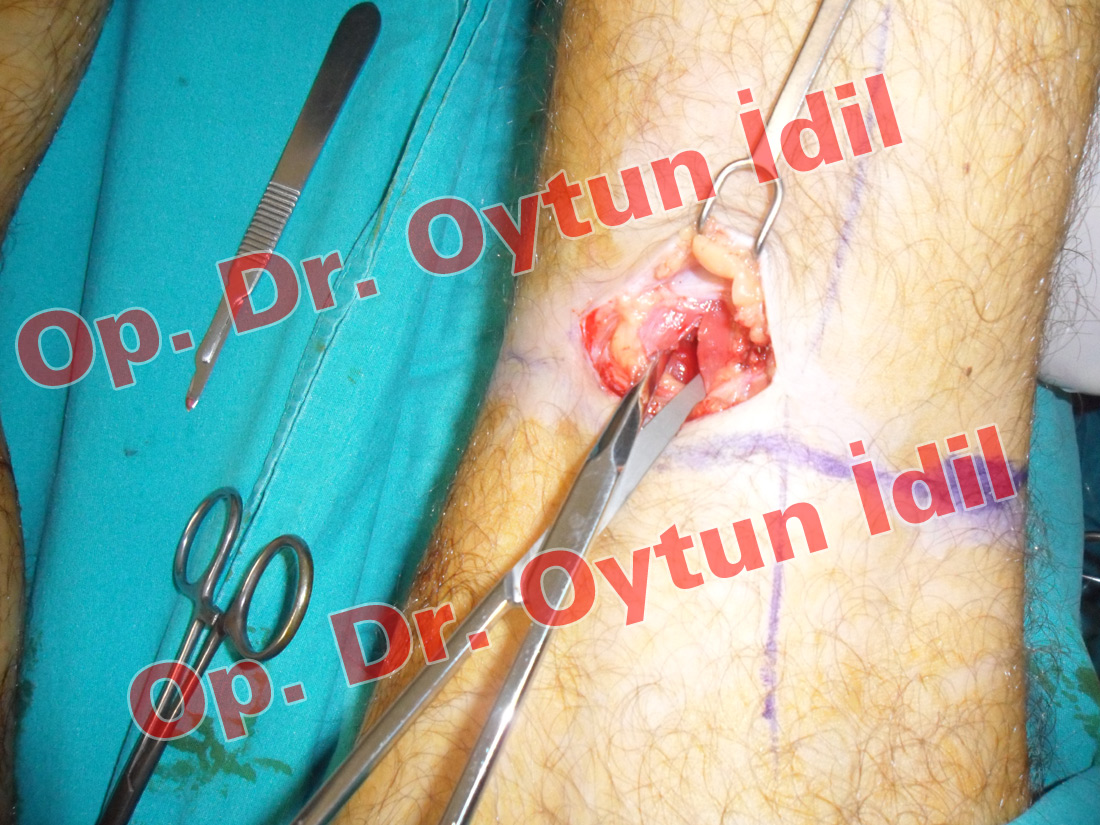
 Muscular fibers are dissected with the help of fine-tipped scissors. I would hereby like to draw your attention to this point. Here we do not use the surgical scissors for snipping on the contrary we use it for not snipping. We place the tip between the muscular fibers while the scissors is closed and we open the tip of the scissors while the scissors is between the muscular fibers (that’s why we use fine tipped surgical scissors in this surgery; the tip of the scissors should be moved forward into the muscle fibers). Accordingly we open a lodge without damaging the muscular fibers. With the help of a specific surgical instrument (İDİL DISSECTOR, which is patented to my name), the muscle fibers are dissected along the muscle to create the convenient lodge where the implant will be placed.
Muscular fibers are dissected with the help of fine-tipped scissors. I would hereby like to draw your attention to this point. Here we do not use the surgical scissors for snipping on the contrary we use it for not snipping. We place the tip between the muscular fibers while the scissors is closed and we open the tip of the scissors while the scissors is between the muscular fibers (that’s why we use fine tipped surgical scissors in this surgery; the tip of the scissors should be moved forward into the muscle fibers). Accordingly we open a lodge without damaging the muscular fibers. With the help of a specific surgical instrument (İDİL DISSECTOR, which is patented to my name), the muscle fibers are dissected along the muscle to create the convenient lodge where the implant will be placed.
 Until now, we did not have suitable specific surgical instruments to create the convenient lodge where the implant will be placed. We had several difficulties and challenges as we had to perform the surgery with the existing surgical instruments at hand. That's why I had to design my own specific surgical instrument (İdil dissector) in order to facilitate our work. In this way, I can now complete the surgery in an hour with much more control.
Until now, we did not have suitable specific surgical instruments to create the convenient lodge where the implant will be placed. We had several difficulties and challenges as we had to perform the surgery with the existing surgical instruments at hand. That's why I had to design my own specific surgical instrument (İdil dissector) in order to facilitate our work. In this way, I can now complete the surgery in an hour with much more control.


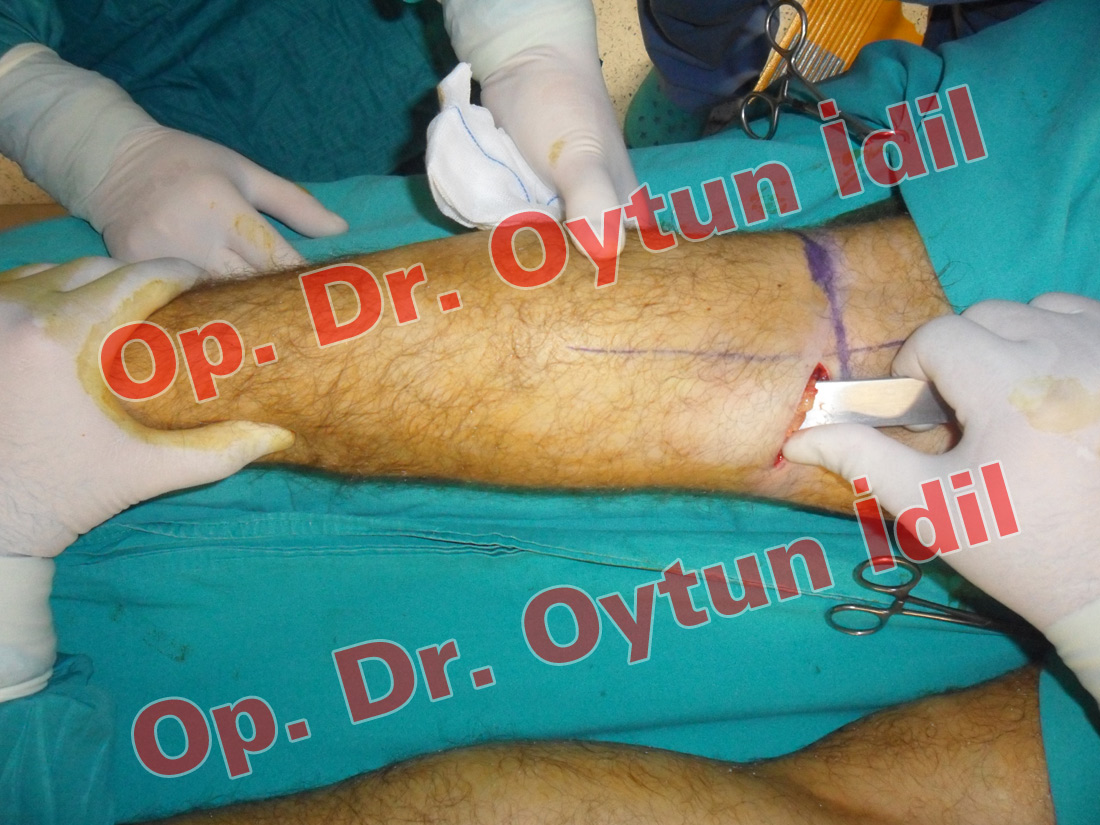
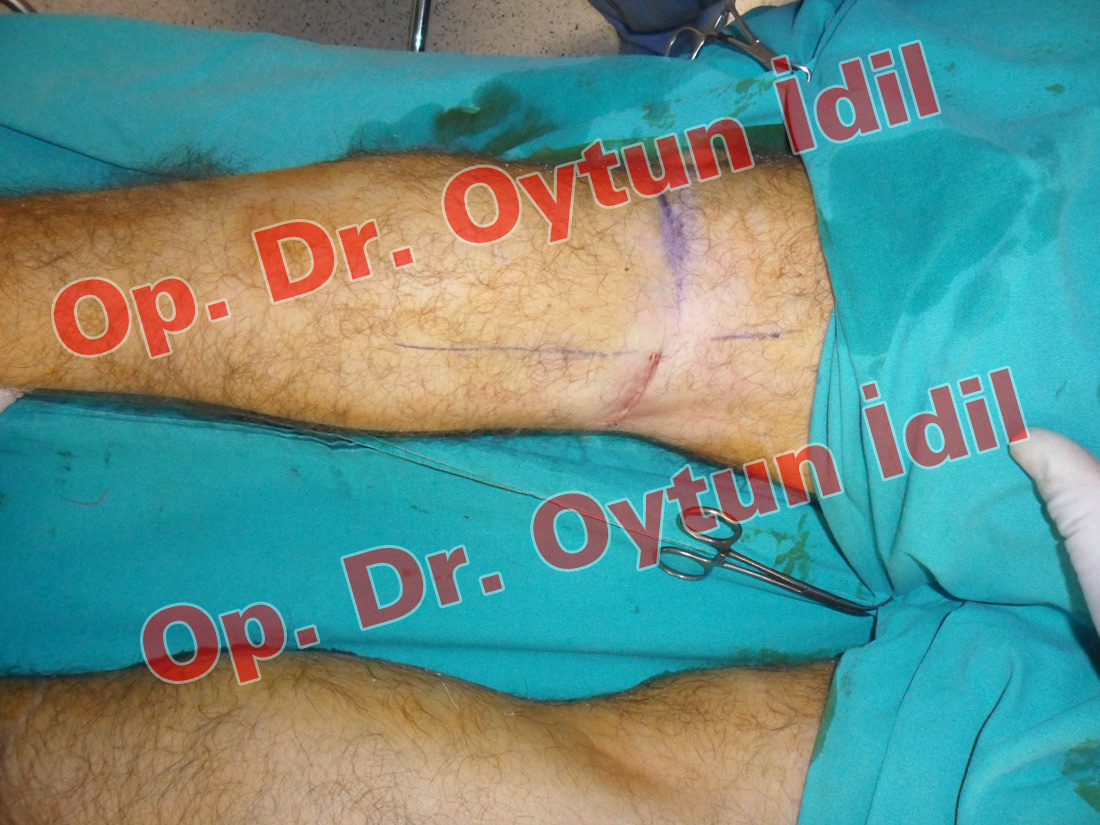
 No tissue is damaged in this surgery, whole procedure is completely reversible (implants may be removed whenever you want and without any extra problem) and without any bleeding.
No tissue is damaged in this surgery, whole procedure is completely reversible (implants may be removed whenever you want and without any extra problem) and without any bleeding.
![]() If you cannot view the video below, click here to watch it on YouTube.
If you cannot view the video below, click here to watch it on YouTube.
 Thanks to the patented "İdil dissector", it takes an average of 8-10 minutes to place an implant in a leg. The surgery of both legs is finalized within a total of 30 minutes. We record all our surgeries with GoPro. Here, I ask my nurse the duration after finalizing the surgery on the first leg. The answer is: “Eight minutes!” It took only eight minutes to finalize the surgery on the first leg. The entire surgery (from the beginning till the end) takes around 30 minutes.
Thanks to the patented "İdil dissector", it takes an average of 8-10 minutes to place an implant in a leg. The surgery of both legs is finalized within a total of 30 minutes. We record all our surgeries with GoPro. Here, I ask my nurse the duration after finalizing the surgery on the first leg. The answer is: “Eight minutes!” It took only eight minutes to finalize the surgery on the first leg. The entire surgery (from the beginning till the end) takes around 30 minutes.
![]() If you cannot view the video below, click here to watch it on YouTube.
If you cannot view the video below, click here to watch it on YouTube.
 This is a 5-second clip from the 11th minute of another leg aesthetic surgery. It took 11 minutes for us to place the implant in the patient's right leg. Honestly, this took a while. It’s 8 minutes under normal conditions. When we completed the surgical intervention on the other leg and finalized the operation, the camera's time counter was at 35 minutes. It is the patented “idil calf dissector" of my own design that makes this surgery so practical. Thanks to this instrument, the surgery is completed quickly and easily without any bleeding. It is possible to place the implant exactly to the desired location (intramuscular).
This is a 5-second clip from the 11th minute of another leg aesthetic surgery. It took 11 minutes for us to place the implant in the patient's right leg. Honestly, this took a while. It’s 8 minutes under normal conditions. When we completed the surgical intervention on the other leg and finalized the operation, the camera's time counter was at 35 minutes. It is the patented “idil calf dissector" of my own design that makes this surgery so practical. Thanks to this instrument, the surgery is completed quickly and easily without any bleeding. It is possible to place the implant exactly to the desired location (intramuscular).
![]() If you cannot view the video below, click here to watch it on YouTube.
If you cannot view the video below, click here to watch it on YouTube.
 This is a 5-second clip from the 11th minute of another aesthetic calf restoration surgery. It took 8 minutes for us to place the implant in the patient's right leg. When we completed the surgical intervention on the other leg and finalized the operation, the camera's time counter was at 42 minutes. In this example, total duration of the operation is slightly longer (normally, this procedure ends in 30-35 minutes from the beginning to the end) as a surgeon colleague visited us to watch the operation. The operation took a little longer because I was describing my colleague the procedure simultaneously as I performed the surgery. It is the patented “idil calf dissector" of my own design that makes this surgery so practical. Thanks to this instrument, the surgery is completed quickly and easily without any bleeding. It is possible to place the implant exactly to the desired location (intramuscular). "İdil leg dissector" has become a complete milestone and a turning point for this type of surgery. Colleagues, who want to buy this dissector, may call Elektron Medical. I have never expected any financial gain from Elektron Medikal in exchange for the right to use the patent. I just wished this instrument to be sold at an affordable price without the expectation of any profit. I wish this groundbreaking instrument in cosmetic calf surgery to be useful for all plastic surgeons in our country. It facilitated the procedure. It may also be used for other silicone surgeries (breast, butt, arm).
This is a 5-second clip from the 11th minute of another aesthetic calf restoration surgery. It took 8 minutes for us to place the implant in the patient's right leg. When we completed the surgical intervention on the other leg and finalized the operation, the camera's time counter was at 42 minutes. In this example, total duration of the operation is slightly longer (normally, this procedure ends in 30-35 minutes from the beginning to the end) as a surgeon colleague visited us to watch the operation. The operation took a little longer because I was describing my colleague the procedure simultaneously as I performed the surgery. It is the patented “idil calf dissector" of my own design that makes this surgery so practical. Thanks to this instrument, the surgery is completed quickly and easily without any bleeding. It is possible to place the implant exactly to the desired location (intramuscular). "İdil leg dissector" has become a complete milestone and a turning point for this type of surgery. Colleagues, who want to buy this dissector, may call Elektron Medical. I have never expected any financial gain from Elektron Medikal in exchange for the right to use the patent. I just wished this instrument to be sold at an affordable price without the expectation of any profit. I wish this groundbreaking instrument in cosmetic calf surgery to be useful for all plastic surgeons in our country. It facilitated the procedure. It may also be used for other silicone surgeries (breast, butt, arm).
![]() If you cannot view the video below, click here to watch it on YouTube.
If you cannot view the video below, click here to watch it on YouTube.

 We may come up with some difficulties while placing the implants. Placing asymmetrical and voluminous implants is particularly difficult; when placing asymmetric implants the thin side should be oriented downwards (on the heel). While placing the implants with the thin side oriented downwards, the thin tip may bend if not inserted correctly. Skill and experience is required to place these implants correctly, without bending the tip. If you have specific surgical instruments for this procedure, placing asymmetrical implants is a much easier process.
We may come up with some difficulties while placing the implants. Placing asymmetrical and voluminous implants is particularly difficult; when placing asymmetric implants the thin side should be oriented downwards (on the heel). While placing the implants with the thin side oriented downwards, the thin tip may bend if not inserted correctly. Skill and experience is required to place these implants correctly, without bending the tip. If you have specific surgical instruments for this procedure, placing asymmetrical implants is a much easier process.
 One of the reasons why I designed my own specific surgical instrument was the difficulties I had in placing these asymmetrical implants. While placing asymmetric implants with the thin side oriented downwards, the thin tip tend to bend easily. So I had to design a personal specific surgical instrument (Idil dissector).
One of the reasons why I designed my own specific surgical instrument was the difficulties I had in placing these asymmetrical implants. While placing asymmetric implants with the thin side oriented downwards, the thin tip tend to bend easily. So I had to design a personal specific surgical instrument (Idil dissector).
 In addition, this surgery is different from all other procedures in terms of the area of application. A 3-4 cm long incision is made on the posterior region of the lower leg behind the knee. We work on an area about 30 cm long along the leg. None of the existing surgical instruments are suitable for working on such a thin and wide area. Therefore, as I gained experience with these surgeries over the years, I started to develop various surgical instruments. After making a few modifications on idil dissector, I finalized its design and applied for a patent. I got the patent on the first application. For detailed information about idil dissector, please see the ("Idil dissector") page.
In addition, this surgery is different from all other procedures in terms of the area of application. A 3-4 cm long incision is made on the posterior region of the lower leg behind the knee. We work on an area about 30 cm long along the leg. None of the existing surgical instruments are suitable for working on such a thin and wide area. Therefore, as I gained experience with these surgeries over the years, I started to develop various surgical instruments. After making a few modifications on idil dissector, I finalized its design and applied for a patent. I got the patent on the first application. For detailed information about idil dissector, please see the ("Idil dissector") page.
 Implant is placed intramuscularly, dissected fibers of the muscle are sutured, the fascia on the muscle is sutured; following the subcutaneous and subdermal sutures finally aesthetic-hidden skin suture is performed with dissolvable (absorbable) stitches (sutures). In this way, the incision line is stitched 5 times. Aesthetic-hidden skin sutures, performed with dissolvable (absorbable) stitches (sutures), do not require removal.
Implant is placed intramuscularly, dissected fibers of the muscle are sutured, the fascia on the muscle is sutured; following the subcutaneous and subdermal sutures finally aesthetic-hidden skin suture is performed with dissolvable (absorbable) stitches (sutures). In this way, the incision line is stitched 5 times. Aesthetic-hidden skin sutures, performed with dissolvable (absorbable) stitches (sutures), do not require removal.
 The photos above reveal that the operation is finalized without any bleeding and does not damage the patient. The photo below illustrates the gauze pads we used in one of our cases, from the beginning to the end of the surgery. They were used when placing two implants, one in the left leg and the other in the right leg. This is the total bleeding in the surgery. I think this surgery is the one causing the least bleeding among other aesthetic surgical procedures. In addition, no incision is made on any tissue other than the skin.
The photos above reveal that the operation is finalized without any bleeding and does not damage the patient. The photo below illustrates the gauze pads we used in one of our cases, from the beginning to the end of the surgery. They were used when placing two implants, one in the left leg and the other in the right leg. This is the total bleeding in the surgery. I think this surgery is the one causing the least bleeding among other aesthetic surgical procedures. In addition, no incision is made on any tissue other than the skin.
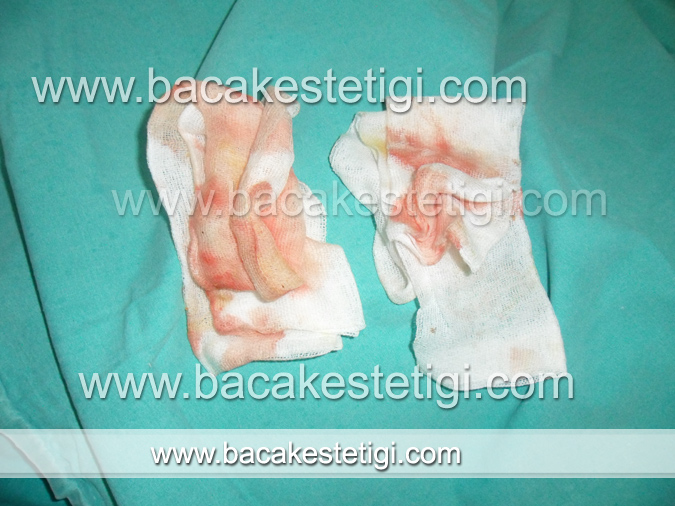
 The legs, from the toes to the knees, are wrapped with a special bandage. This bandage not only prevents the edema in the legs, but also reduces the pain that the patient will suffer. The patient can get up and go to the toilet himself on the evening of the operation. If the legs are not tightly wrapped, the implants placed intramuscularly will move and cause pain while the patient is walking. However when the legs are wrapped the implants will remain stable and the patient will suffer less pain.
The legs, from the toes to the knees, are wrapped with a special bandage. This bandage not only prevents the edema in the legs, but also reduces the pain that the patient will suffer. The patient can get up and go to the toilet himself on the evening of the operation. If the legs are not tightly wrapped, the implants placed intramuscularly will move and cause pain while the patient is walking. However when the legs are wrapped the implants will remain stable and the patient will suffer less pain.
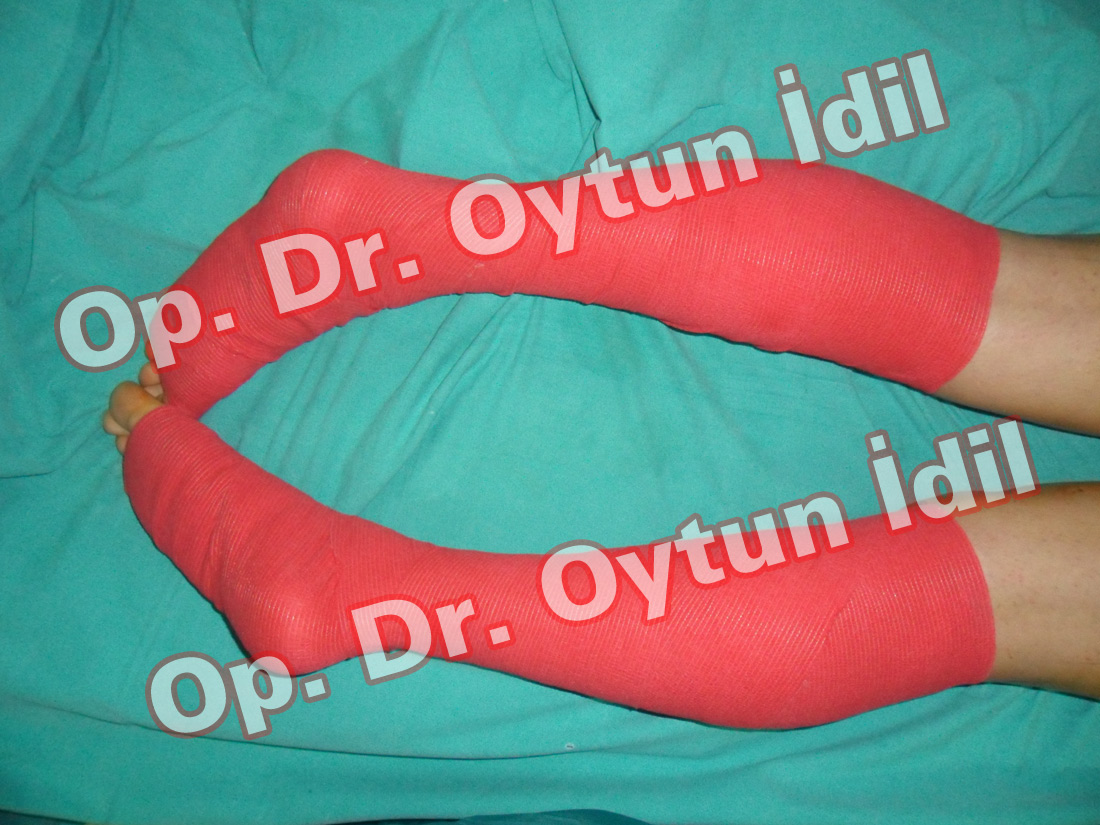
 There is almost no bleeding in this surgery, the operation takes a very short time and the patient is given a light anesthesia. Despite all these, we always hospitalize the patient for one night. Why? Because during the surgery we insert the implants intramuscularly; this procedure causes the muscle (gastrocnemius muscle-calf muscle) to stretch. This stretching causes pain. The most common pain associated with muscle tension is gas pain and everyone knows how excruciating gas pain is. It is the intestinal muscle that swells and stretches with gas causing a gas pain. The pain associated with muscle tension (spasm) is severe and excruciating. Therefore, patients with intramuscular implants (butt implants, calf implants, submuscular breast implants...) experience severe pain on the first evening of the operation. It is necessary to hospitalize these patients on the first evening; they should be administered intravenously strong analgesics and neuromuscular blockers. The next morning, the pain is usually reduced and the patient can be discharged on foot. Analgesic tablets that the patient will use at home will be enough to relieve his pain.
There is almost no bleeding in this surgery, the operation takes a very short time and the patient is given a light anesthesia. Despite all these, we always hospitalize the patient for one night. Why? Because during the surgery we insert the implants intramuscularly; this procedure causes the muscle (gastrocnemius muscle-calf muscle) to stretch. This stretching causes pain. The most common pain associated with muscle tension is gas pain and everyone knows how excruciating gas pain is. It is the intestinal muscle that swells and stretches with gas causing a gas pain. The pain associated with muscle tension (spasm) is severe and excruciating. Therefore, patients with intramuscular implants (butt implants, calf implants, submuscular breast implants...) experience severe pain on the first evening of the operation. It is necessary to hospitalize these patients on the first evening; they should be administered intravenously strong analgesics and neuromuscular blockers. The next morning, the pain is usually reduced and the patient can be discharged on foot. Analgesic tablets that the patient will use at home will be enough to relieve his pain.
 We have been video-recording all our surgeries from the beginning to end for about 9 years. We consider this like a security camera for our patients. All the procedures in the surgeries, preparations applied to the patient's surgical area, the surgery, stitching etc. are all recorded with camera. Particularly in surgeries where we use silicone implants, even the procedures with regard to opening of the original cover of the implants and proper washing with antibiotic serum are recorded.
We have been video-recording all our surgeries from the beginning to end for about 9 years. We consider this like a security camera for our patients. All the procedures in the surgeries, preparations applied to the patient's surgical area, the surgery, stitching etc. are all recorded with camera. Particularly in surgeries where we use silicone implants, even the procedures with regard to opening of the original cover of the implants and proper washing with antibiotic serum are recorded.
 One of the importance with regard to these video recordings is that it allows to refer to the video recording in case you face any problem or complication in the future.
One of the importance with regard to these video recordings is that it allows to refer to the video recording in case you face any problem or complication in the future.
![]() If you cannot view the video below, click here to watch it on YouTube.
If you cannot view the video below, click here to watch it on YouTube.
 The patient rests at home for 3 days after discharge. He/she can take short walks in the house, go to the toilet alone.
The patient rests at home for 3 days after discharge. He/she can take short walks in the house, go to the toilet alone.
 The patient is called for a follow-up on the postoperative 3rd day. The patient, who comes to the follow-up on the postoperative 3rd day, still walks with short steps (Please refer the videos on the recovery page to watch the gait of the patient). The bandages on the legs are removed. The dressing of the suture line posterior to the knee is renewed. The leg is not re-wrapped. The patient's gait improves rapidly as of that day. Following the follow-up, the patient is particularly encouraged for short walks.
The patient is called for a follow-up on the postoperative 3rd day. The patient, who comes to the follow-up on the postoperative 3rd day, still walks with short steps (Please refer the videos on the recovery page to watch the gait of the patient). The bandages on the legs are removed. The dressing of the suture line posterior to the knee is renewed. The leg is not re-wrapped. The patient's gait improves rapidly as of that day. Following the follow-up, the patient is particularly encouraged for short walks.
 Neither a cane nor a walker should be used while walking. Normalization of the patient's gait shall be delayed, as the patient gets used to such walking aids.
Neither a cane nor a walker should be used while walking. Normalization of the patient's gait shall be delayed, as the patient gets used to such walking aids.
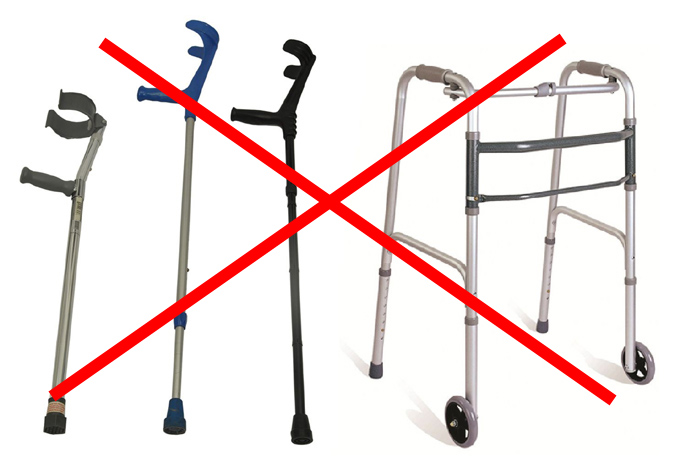
 There are no visible sutures at the incision line behind the knee. Aesthetic-hidden skin suture is performed with dissolvable (absorbable) stitches (sutures).
There are no visible sutures at the incision line behind the knee. Aesthetic-hidden skin suture is performed with dissolvable (absorbable) stitches (sutures).
 The patient regains normal gait within the next 3-4 days.
The patient regains normal gait within the next 3-4 days.
 Patients often report that they feel more comfortable with wedge and high heels in the post-operative period (see videos on the recovery page). Since high heels will keep the calf muscle loose, it will reduce the pain in the first days. Wedge heeled platform shoes rather than stilettos will make it easier to stay balanced while walking. The following shoes are examples of such suitable shoes. If you are considering to undergo this surgery, you are advised to have this type of shoes ready to wear during the recovery period.
Patients often report that they feel more comfortable with wedge and high heels in the post-operative period (see videos on the recovery page). Since high heels will keep the calf muscle loose, it will reduce the pain in the first days. Wedge heeled platform shoes rather than stilettos will make it easier to stay balanced while walking. The following shoes are examples of such suitable shoes. If you are considering to undergo this surgery, you are advised to have this type of shoes ready to wear during the recovery period.
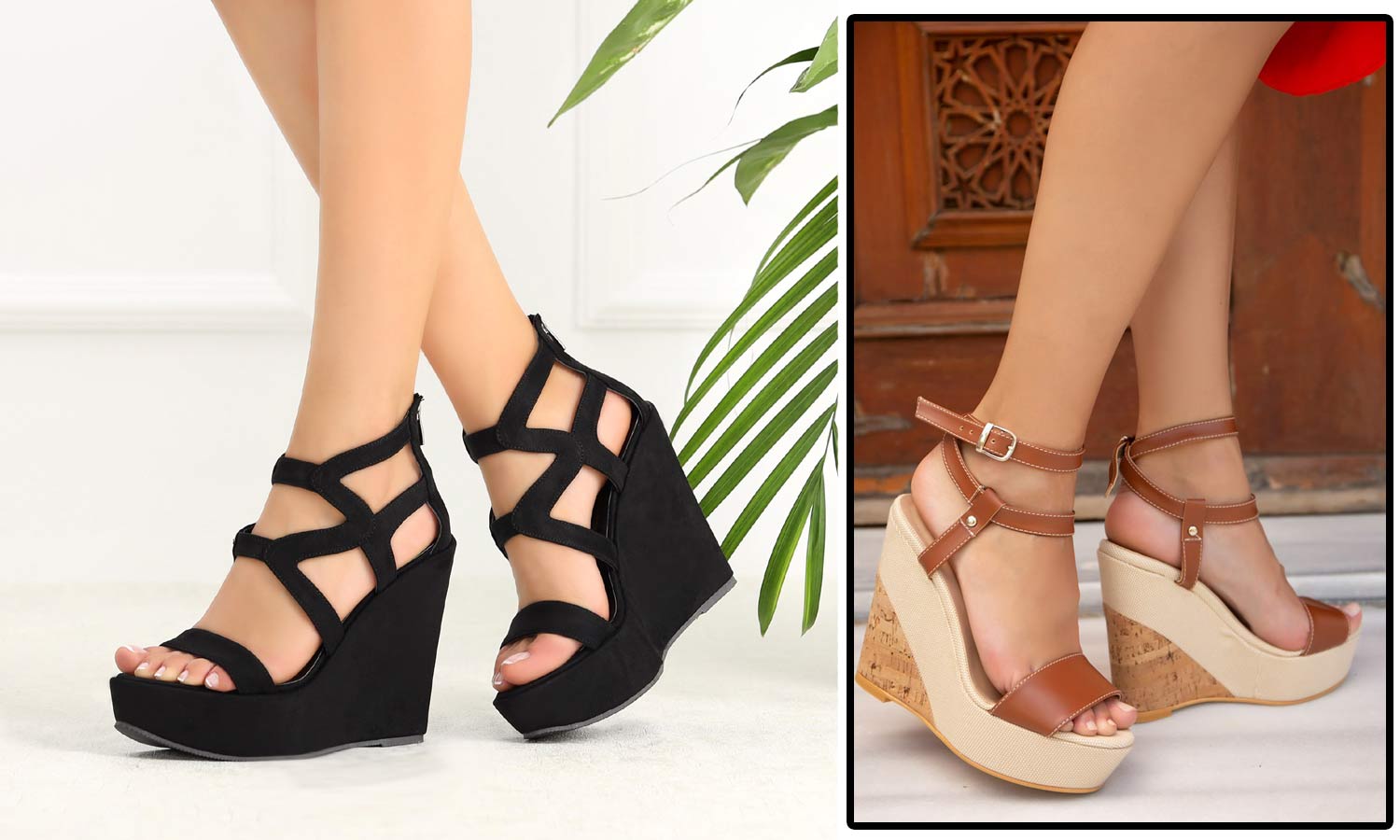
 The result that you will see immediately after the surgery is not the final result of the operation. Over the months, the implant placed intramuscularly will gradually loosen the membrane (fascia) surrounding the calf muscle and allow the calf to augment. Depending on the size of the implant inserted, the leg diameter will increase by a few more centimeters within 3-6 months. Throughout this time, the tension in the leg will also relax. This situation is similar to buying a new shoe. When you purchase new pair of shoes, the shoes will not immediately fit on your foot. As you wear them over the weeks, the shoes will loosen and take the shape of your foot. Just like that, it takes 3-6 months to get the desired result from the operation. The implant placed intramuscularly will allow the muscular fascia to get loose, it will settle well in its lodge inside the muscle hence the induration caused by the surgery lets loose.
The result that you will see immediately after the surgery is not the final result of the operation. Over the months, the implant placed intramuscularly will gradually loosen the membrane (fascia) surrounding the calf muscle and allow the calf to augment. Depending on the size of the implant inserted, the leg diameter will increase by a few more centimeters within 3-6 months. Throughout this time, the tension in the leg will also relax. This situation is similar to buying a new shoe. When you purchase new pair of shoes, the shoes will not immediately fit on your foot. As you wear them over the weeks, the shoes will loosen and take the shape of your foot. Just like that, it takes 3-6 months to get the desired result from the operation. The implant placed intramuscularly will allow the muscular fascia to get loose, it will settle well in its lodge inside the muscle hence the induration caused by the surgery lets loose.
 Some patients who have undergone surgery complain of swelling of their feet in the first 2 months after surgery. Our patients, who particularly work as stewardesses and tour guides, complain of edema on their legs when they stay up for a long time (after long flights or long tours) within 1-2 months after surgery. This condition is temporary. Usually, there is no swelling and edema on the feet after two months following the surgery.
Some patients who have undergone surgery complain of swelling of their feet in the first 2 months after surgery. Our patients, who particularly work as stewardesses and tour guides, complain of edema on their legs when they stay up for a long time (after long flights or long tours) within 1-2 months after surgery. This condition is temporary. Usually, there is no swelling and edema on the feet after two months following the surgery.
 If possible, patients are called back for a follow-up after 6-12 months and their final photos are taken.
If possible, patients are called back for a follow-up after 6-12 months and their final photos are taken.
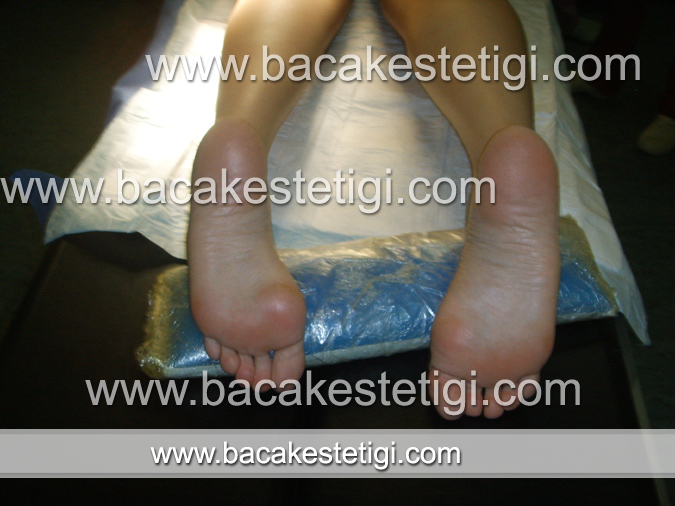
 However the asymmetry between the shoe sizes of these patients can not be corrected. In case limb length discrepancy (LLD) is too severe to be handled by wearing orthopedic wedged heeled or high heeled shoes, a limb-lengthening surgery is available. Some orthopedists use ILIZAROV surgery to provide limb restoration. Ilizarov is a long-term treatment performed by orthopedists and requires at least 2 surgeries. We plastic surgeons do not perform Ilizarov surgeries. Click here for detailed information about this.
However the asymmetry between the shoe sizes of these patients can not be corrected. In case limb length discrepancy (LLD) is too severe to be handled by wearing orthopedic wedged heeled or high heeled shoes, a limb-lengthening surgery is available. Some orthopedists use ILIZAROV surgery to provide limb restoration. Ilizarov is a long-term treatment performed by orthopedists and requires at least 2 surgeries. We plastic surgeons do not perform Ilizarov surgeries. Click here for detailed information about this.
 For these patients, we plastic surgeons restore the asymmetry between two legs by performing calf augmentation surgeries using specific silicone calf implants. There are many points that need to be considered to get the best result during this operation. Based on my experience over the years, I have learned that patients should also be patient and rely on their surgeons. In case you want to get a good result, in particular patients with polio sequelae, you have to rely on your surgeon and be patient. Please read the articles I have listed below.
For these patients, we plastic surgeons restore the asymmetry between two legs by performing calf augmentation surgeries using specific silicone calf implants. There are many points that need to be considered to get the best result during this operation. Based on my experience over the years, I have learned that patients should also be patient and rely on their surgeons. In case you want to get a good result, in particular patients with polio sequelae, you have to rely on your surgeon and be patient. Please read the articles I have listed below.
 In these patients, our goal is never to achieve an exact equalization and symmetry between the two legs. Even if it is possible to achieve a completely symmetric look, when measured with a tape measure we observe that the result is not that equal in terms of measures. This is due to the fact that it is not very easy to determine the volume of implants needed to achieve a complete symmetry and it is because implants of all sizes and all volumes are not available.These implants, like silicone breast implants, are not produced in the form of series that gradually increase in certain volumes. For example, many companies offer breast implants which gradually increase in 25cc. volumes (for example, 200cc., 225cc., 250cc., 275cc....). Unfortunately, we don't have such a wide range of products with regard to calf implants. There are only 7 symmetrical implants and 4 asymmetric implants even in the catalog of Eurosilicone, which offers the widest range of products (you can download Eurosilicone's catalog from our own server. The catalog was removed from Eurosilicone's corporate website in the last update, so I put it on our own server). For this reason, our ultimate goal for these patients is to minimize the asymmetry of the legs by using the most appropriate implants possible. We suggest patients to look at their legs from afar in the mirror, instead of measuring them after surgery. Our goal is to minimize the asymmetry to a level that will not attract attention, not to achieve the symmetry inch by inch. If the asymmetry between your legs, which was previously noticeable when you wore short skirts or shorts, has decreased decisively to a level which will not draw attention of others; the result is considered as successful even if the measurement between the two legs is a few inches different.
In these patients, our goal is never to achieve an exact equalization and symmetry between the two legs. Even if it is possible to achieve a completely symmetric look, when measured with a tape measure we observe that the result is not that equal in terms of measures. This is due to the fact that it is not very easy to determine the volume of implants needed to achieve a complete symmetry and it is because implants of all sizes and all volumes are not available.These implants, like silicone breast implants, are not produced in the form of series that gradually increase in certain volumes. For example, many companies offer breast implants which gradually increase in 25cc. volumes (for example, 200cc., 225cc., 250cc., 275cc....). Unfortunately, we don't have such a wide range of products with regard to calf implants. There are only 7 symmetrical implants and 4 asymmetric implants even in the catalog of Eurosilicone, which offers the widest range of products (you can download Eurosilicone's catalog from our own server. The catalog was removed from Eurosilicone's corporate website in the last update, so I put it on our own server). For this reason, our ultimate goal for these patients is to minimize the asymmetry of the legs by using the most appropriate implants possible. We suggest patients to look at their legs from afar in the mirror, instead of measuring them after surgery. Our goal is to minimize the asymmetry to a level that will not attract attention, not to achieve the symmetry inch by inch. If the asymmetry between your legs, which was previously noticeable when you wore short skirts or shorts, has decreased decisively to a level which will not draw attention of others; the result is considered as successful even if the measurement between the two legs is a few inches different.
 The crooked leg problem, which many patients complain of, may be resolved by placing two calf implants, each in medial and lateral calf muscles (gastrocnemius muscles): In some patients subjected to post-polio syndrome (PPS, poliomyelitis sequelae), affected leg is so thin that it may be necessary to place 2 implants on that leg to equalize the two sides. In the event both the medial and the lateral gastrocnemius muscles that provide the calf its fullness are affected by the disease, there is loss of volume in both of these muscles and the leg has remained very thin for this reason. To achieve a favorable fullness in the calf region posterior to the legs, with the most natural result possible, it may be necessary to place two calf implants, each in medial and lateral calf muscles (gastrocnemius muscles). It may not always be possible to place these two implants in the same session with a single surgery. In case the leg is too thin, the surgeon is expected to wait for a long time for the subsequent surgery after intramuscularly inserting first implant in the calf. After the relaxation of the muscular tension and the skin regains its elasticity, a subsequent surgery will be performed to intramuscularly insert the second implant in the calf. In another method, we insert a silicone balloon into the calf area and inflate the balloon for a while in the first session. After creating the appropriate lodge for 2 implants to be placed, we perform a second surgery where we remove the balloons and insert both of the permanent silicone implants. A few paragraphs below there is a video about this procedure.
The crooked leg problem, which many patients complain of, may be resolved by placing two calf implants, each in medial and lateral calf muscles (gastrocnemius muscles): In some patients subjected to post-polio syndrome (PPS, poliomyelitis sequelae), affected leg is so thin that it may be necessary to place 2 implants on that leg to equalize the two sides. In the event both the medial and the lateral gastrocnemius muscles that provide the calf its fullness are affected by the disease, there is loss of volume in both of these muscles and the leg has remained very thin for this reason. To achieve a favorable fullness in the calf region posterior to the legs, with the most natural result possible, it may be necessary to place two calf implants, each in medial and lateral calf muscles (gastrocnemius muscles). It may not always be possible to place these two implants in the same session with a single surgery. In case the leg is too thin, the surgeon is expected to wait for a long time for the subsequent surgery after intramuscularly inserting first implant in the calf. After the relaxation of the muscular tension and the skin regains its elasticity, a subsequent surgery will be performed to intramuscularly insert the second implant in the calf. In another method, we insert a silicone balloon into the calf area and inflate the balloon for a while in the first session. After creating the appropriate lodge for 2 implants to be placed, we perform a second surgery where we remove the balloons and insert both of the permanent silicone implants. A few paragraphs below there is a video about this procedure.
 The recovery period lasts much longer compared to patients without a prior polio. The potential for walking and running on the already affected leg of patients with poliomyelitis is not the same as a normal person. On the affected leg, you usually observe a slight dragging of the feet while walking (dragging may also be more depending on how much the leg is affected). The patient is usually not very comfortable when walking. It takes a longer time for the muscle to regain its former gait (which is already poorer than a normal person) following a surgery where a calf implant is placed in the calf muscle. In other words, not only the patient's calf muscles are weak but also are more affected by the implant as the leg is too thin due to prior polio. In fact, if 2 implants are placed into the affected leg, the recovery period will take even longer. Normal patients regain normal gait within 1 week, while patients with post post-polio syndrome (PPS, poliomyelitis sequelae) regain their gait as before in an average of 1 month.
The recovery period lasts much longer compared to patients without a prior polio. The potential for walking and running on the already affected leg of patients with poliomyelitis is not the same as a normal person. On the affected leg, you usually observe a slight dragging of the feet while walking (dragging may also be more depending on how much the leg is affected). The patient is usually not very comfortable when walking. It takes a longer time for the muscle to regain its former gait (which is already poorer than a normal person) following a surgery where a calf implant is placed in the calf muscle. In other words, not only the patient's calf muscles are weak but also are more affected by the implant as the leg is too thin due to prior polio. In fact, if 2 implants are placed into the affected leg, the recovery period will take even longer. Normal patients regain normal gait within 1 week, while patients with post post-polio syndrome (PPS, poliomyelitis sequelae) regain their gait as before in an average of 1 month.
 In addition to calf implant surgery, it may be necessary to apply fat injections in some places: In patients with prior polio, the subcutaneous adipose tissue on the affected leg is also usually less than it should be. Despite there is no muscle mass in the ankle, the ankle is thinner on the affected side compared to the other side due to reduced adipose tissue. After placing the implants, it may be necessary to further inject fat between the lower ends of the implants and the ankle so that a more natural look is obtained.
In addition to calf implant surgery, it may be necessary to apply fat injections in some places: In patients with prior polio, the subcutaneous adipose tissue on the affected leg is also usually less than it should be. Despite there is no muscle mass in the ankle, the ankle is thinner on the affected side compared to the other side due to reduced adipose tissue. After placing the implants, it may be necessary to further inject fat between the lower ends of the implants and the ankle so that a more natural look is obtained.
 In some cases with very thin (atrophic) legs, it may be necessary to perform multiple surgeries: As I mentioned above, sometimes it may be necessary to put two implants. In case it is not possible to insert 2 implants in one session; one implant is placed thereafter the surgeon waits for an appropriate time for the subsequent surgery to insert the second implant in the calf. Second alternative is the balloon technique. In such cases, it may be necessary to perform more than one operation.
In some cases with very thin (atrophic) legs, it may be necessary to perform multiple surgeries: As I mentioned above, sometimes it may be necessary to put two implants. In case it is not possible to insert 2 implants in one session; one implant is placed thereafter the surgeon waits for an appropriate time for the subsequent surgery to insert the second implant in the calf. Second alternative is the balloon technique. In such cases, it may be necessary to perform more than one operation.
 Please see the video below:
Please see the video below:
![]() If you cannot view the video below, click here to watch it on YouTube.
If you cannot view the video below, click here to watch it on YouTube.
 After all, in patients with polio sequelae...
After all, in patients with polio sequelae...
 Really successful results are obtained with calf implants.. Patients with polio sequelae should not expect that both legs will be equalized inch by inch. Although this may be possible, it would not be right to give guarantees about this.
Really successful results are obtained with calf implants.. Patients with polio sequelae should not expect that both legs will be equalized inch by inch. Although this may be possible, it would not be right to give guarantees about this.
 The recovery period is longer in patients with prior polio compared to normal patients. You need to be patient following the surgery.
The recovery period is longer in patients with prior polio compared to normal patients. You need to be patient following the surgery.
 The thinner the affected leg, the more difficult our work will be. You may need multiple surgeries and a longer recovery period.
The thinner the affected leg, the more difficult our work will be. You may need multiple surgeries and a longer recovery period.
 At the end, symmetry is provided so that you can easily wear a short skirt or shorts. Please keep in mind that our goal here is to resolve the asymmetry between your legs to a level that will not be noticed when looked outside. For sure no one will take a tape measure and measure the circumference of your calf. Our main purpose is to resolve the apparent asymmetry between your legs to a level that will not be noticed when looked outside.
At the end, symmetry is provided so that you can easily wear a short skirt or shorts. Please keep in mind that our goal here is to resolve the asymmetry between your legs to a level that will not be noticed when looked outside. For sure no one will take a tape measure and measure the circumference of your calf. Our main purpose is to resolve the apparent asymmetry between your legs to a level that will not be noticed when looked outside.
 Complications that may occur after surgery usually are associated with incorrect implant and incorrect placement of implants. In case the surgeon fails to choose the most appropriate implant for the patient, the final appearance from the outside may be disappointing; the implant may be larger than the patient's leg length and may press in upon the suture line. I have seen patients suffering extensive necrosis of the calf muscle and skin due to this reason. The boundaries of the superficially inserted implants may be noticed from outside. Implants that are not correctly placed intramuscularly may rarely end in displacement or press in upon the suture line. If the tip is curled when installing asymmetric and voluminous implants, a lump-like bulge can be noticed from the outside in the lower part down to the ankle. If the correct implant is selected and placed in the right area, there are usually no complications.
Complications that may occur after surgery usually are associated with incorrect implant and incorrect placement of implants. In case the surgeon fails to choose the most appropriate implant for the patient, the final appearance from the outside may be disappointing; the implant may be larger than the patient's leg length and may press in upon the suture line. I have seen patients suffering extensive necrosis of the calf muscle and skin due to this reason. The boundaries of the superficially inserted implants may be noticed from outside. Implants that are not correctly placed intramuscularly may rarely end in displacement or press in upon the suture line. If the tip is curled when installing asymmetric and voluminous implants, a lump-like bulge can be noticed from the outside in the lower part down to the ankle. If the correct implant is selected and placed in the right area, there are usually no complications.
 The probability of encountering a complication at the end of such a surgery is very low compared to many other plastic surgeries (to be realistic, it would be a lie to claim that the probability of complications is zero; however we can still say that it is very low). This is due to the fact that the operation is completed without bleeding, the intramuscular implant is completely stabilized and there is no long suture line.
The probability of encountering a complication at the end of such a surgery is very low compared to many other plastic surgeries (to be realistic, it would be a lie to claim that the probability of complications is zero; however we can still say that it is very low). This is due to the fact that the operation is completed without bleeding, the intramuscular implant is completely stabilized and there is no long suture line.
 Although very rare, there may be hematoma (collection of blood at the site of surgery), opening at the suture line, and in cases of poliomyelitis peroneal nerve may be damaged (when the implant is placed in the lateral gastrocnemius). The formed hematoma can be drained, the opened suture line is repaired again. The peroneal nerve injury usually resolves within 6-24 months. If attention is paid during surgery, the nerve is not excised; however the nerve may be damaged due to being pulled right and left.
Although very rare, there may be hematoma (collection of blood at the site of surgery), opening at the suture line, and in cases of poliomyelitis peroneal nerve may be damaged (when the implant is placed in the lateral gastrocnemius). The formed hematoma can be drained, the opened suture line is repaired again. The peroneal nerve injury usually resolves within 6-24 months. If attention is paid during surgery, the nerve is not excised; however the nerve may be damaged due to being pulled right and left.
 To date, I have encountered only 1 case of hematoma associated with this surgery (between 2004-2020). The hematoma in this case developed on the 17. day. The problem was solved with a small surgical intervention (we just drained the hematoma).
To date, I have encountered only 1 case of hematoma associated with this surgery (between 2004-2020). The hematoma in this case developed on the 17. day. The problem was solved with a small surgical intervention (we just drained the hematoma).
